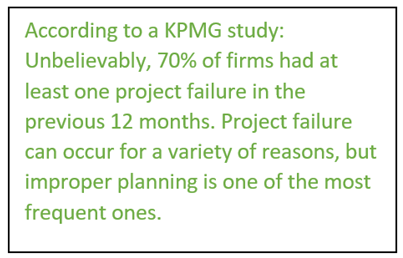Women Empowerment – Workshop 12 (Action Plan)

The Appleton Greene Corporate Training Program (CTP) for Women Empowerment is provided by Ms. Tull Certified Learning Provider (CLP). Program Specifications: Monthly cost USD$2,500.00; Monthly Workshops 6 hours; Monthly Support 4 hours; Program Duration 12 months; Program orders subject to ongoing availability.
If you would like to view the Client Information Hub (CIH) for this program, please Click Here
Learning Provider Profile

Ms. Tull is a Certified Learning Provider (CLP) with Appleton Greene. She has over 25 years of experience in coaching, consulting and training CEO’s and executives. She specializes in the areas of personal and professional development and leadership. She is passionate about empowering women in the workplace equipping them with leadership skills and helping them to reveal their unique value, so they can reach their true potential and make a bigger impact. She has industry experience in the following sectors: Technology, Financial Services, Biomedical, Consultancy and Healthcare. She has commercial experience in the following countries: United States, Canada, England, Mexico and Sweden. More specifically within the following cities: Austin, TX; Houston, TX; Dallas, TX; Los Angeles, CA; New York City NY; St. Louis, MS; Virginia Beach, VA; Chicago IL. Her personal achievements include 17 yrs. as Founder/CEO of Silverlining Concepts, LLC where she empowers business owners and leaders to own their value and earn their worth, Certified Money Breakthrough Method Coach, Best-selling Author of a book about owning your value, so you can earn your worth in the workplace, Executive Contributor to Huffington Post, Biz Journals and Brainz Magazine, featured on the Brainz 500 Global list 2021. She also is a co-host on a national TV show- that focuses on bringing more light and positivity to the world. Her service skills include; leadership development, executive coaching, business strategy, sales and marketing strategies, mindset shifting and advanced communications and presentation skills.
MOST Analysis
Mission Statement
Creating Your Career Success Action Plan – The key to reaching your personal and professional goals is to develop your new skills one step at a time building one upon the other. Having an action plan in place to implement what you have learned into your personal and professional life is essential to making the positive changes last. What are your career goals? Where would you like to see yourself in the next 3 yrs. or 5 yrs.? In this final workshop, we will help you create and implement your Success Action Plan! We will provide you with tools you can use daily to incorporate your new skills effectively, so you can reach your true potential and become the leader you were meant to be!
Objectives
1. Planning Success: It’s critical to have a plan that will guide you toward success in whatever area of your life that you choose. This will assist you in being more deliberate with your actions and ensuring that you’re constantly advancing toward your objectives. Therefore, take the time to create a solid plan for success and then follow it! In this course manual, you will learn the 9 essential steps to include in your success plan and get some valuable advice from some our greatest leaders of all time.
2. Self-Growth Plan: Self-growth is a natural process that helps you improve and broaden your capabilities. Self-improvement can benefit both your professional and personal life because it enables you to reach your best potential. In this lesson, we dive deep on what self-growth is, why its’ important, what a self-growth plan looks like and we reveal the 8 essential steps in creating your personal self-growth plan.
3. Career Plan: A solid career plan may successfully direct your professional life, from landing your first job to having a fulfilling career. You can examine your professional possibilities and create a solid plan for accomplishing your objectives by carefully planning your career. In this course manual, we go through career planning strategies and how to create a productive professional roadmap.
4. Goal Setting: Success will be determined more than ever before by one’s ability to set goals. Setting goals has been connected to success more than any other method or tactic. People who learn to set goals and take decisive efforts toward achieving them achieve and change the world throughout human history. That is why, in this course manual we will ensure you understand how to create powerful and achievable goals that lead to your success.
5. Take Action: Taking action is necessary to achieve your goals because success is not something that comes naturally. In this next lesson, we will explore 15 factors why action is crucial for success as you develop personally and professionally so that you can realize your aspirations, goals, and dreams.
6. Action Plan: Any project must have a plan for management, organization, as well as a goal-realization strategy before it can begin. Any objective can have a clear route to accomplishment created with an action plan (personal, business, or financial goal). This lesson will teach you how to create an efficient and effective action plan and why any goal or project requires one.
7. Strategic Planning: Strategic planning is the skill of developing detailed business plans, putting them into action, and assessing the outcomes in light of a company’s overarching long-term objectives or goals. In this lesson, we will go over the 3-step process of strategic planning, why strategic planning is necessary in obtaining your organizations objectives and also you will have access to a real-world example of an effective strategic plan.
8. Strategic Implementation: The process of putting your strategic plan into practice is known as strategy implementation. Your plan is just as valuable as how well it is put into practice, whether you are implementing a new marketing strategy to boost sales or introducing work management software to boost productivity. This course manual discusses 6 key strategic implementation steps, the 3 c’s for implementation, as well as implementation difficulties and how to prevent them. Additionally, look into several frameworks related to this process to position yourself for success.
9. Plan Examples: Face the daily grind and make a plan for how you can effectively complete your goals if you want to succeed in life. You can accomplish it with the use of a well-designed action plan. It enables you to assess your needs and set objectives that meet the requirements of what an objective should be. This course manual teaches you by sharing examples of others action plans – how to create action plans, carry them out, and eventually realize your most important life goals.
10. Continuous Improvement: An issue that affects all businesses and organizations is continuous improvement. It’s challenging to survive without it unless you don’t have any customers, staff, or rival businesses. While innovation is essential for developing novel processes, goods, or services, continual improvement is essential for raising standards of performance and quality. In today’s cutthroat marketplace, stagnation is loss. Lack of a continuous improvement plan might be deadly and result in high expenses for corrective efforts. In this lesson, we share valuable insight as to how you can continuously improve the processes within your organization.
11. Productivity Habits: “Productivity is less about what you do with your time and more about how you run your mind,” observed Robin S. Sharma once. In the end, productivity is about using your time as efficiently as possible. In this lesson we will share 16 productivity habits that you can easy implement into your everyday life to help you drastically increase your own productivity.
12. Life Success: What does success mean to you? How can one achieve success in life? Success can be equated with various things by different people, including wealth, power, and having a positive impact on society. They’re all accurate. Success can mean different things to different people. It would mean one thing to you, but a different thing to someone else. In this final course manual, we share some of the greatest quotes from some of the most accomplished people in history along with 22 of the top pieces of advice to follow if you wish to succeed as well as a powerful Formula for Success to live the life of your dreams!
Strategies
1. Discover the 9 steps essential in creating your success action plan.
2. Create your personal self-growth plan in 8 key steps.
3. Learn the 8-step process to prepare a career plan and get access to career planning examples and easy to follow templates.
4. Put into practice the 9 simple steps to setting powerful goals.
5. Identify the 15 factors on why taking action is crucial to your success.
6. Learn the 7 phases to writing an effective and efficient action plan.
7. Access the 3-step process to strategic planning.
8. Learn the 6-step process to implement your strategic plan effectively and efficiently.
9. Discover the top 5 reasons to have an action plan and review real life examples of successful companies action plans.
10. Access a plan for ongoing improvement along with powerful tools and techniques.
11. Discover 16 Top Productivity Habits to adopt.
12. Identify 22 strategies for success along with the Formula for Success.
Tasks
1. Go through the Study Guide and Distance Learning lessons first and make notes.
2. Identify the key relationships that need to be managed to ensure project success.
3. Schedule a meeting for the participants to meet and discuss the workshop within 30 days.
4. Each participant will identify three personal goals and see how they relate to the rest of the groups goals.
5. Assess where you currently are with your confidence level, so you can make the necessary adjustments moving forward.
6. As a group you’ll go through an exercise to help kick start your career planning process.
7. Get access to your own daily project planner and learn what SWOT analysis is and how to use it during your strategic planning
8. Begin to implement the strategic planning process necessary in obtaining your organizations goals and objectives.
9. Enjoy the walking One to one problem solving exercise.
10. Share your “greatest possible future” ideas.
11. Experience 2 fun interactive exercises with your group to encourage discussions and to learn the values of your group members.
12. Create your bucket list for what you want to accomplish in your life.
Introduction

It should go without saying that failing to plan is planning to fail. Everybody who has ever had the opportunity to experience failure may relate to these words.
This is demonstrated by the numerous New Year’s resolutions that, for whatever reason, none of us were able to keep, whether they related to an exercise regimen, a diet modification, or learning a new skill.
“WITHOUT GOALS AND PLANS TO REACH THEM, YOU ARE LIKE A SHIP THAT HAS SET SAIL WITH NO DESTINATION.” — FITZHUGH DODSON
Why is having a success action plan necessary?
Planning may be seen by some as tedious and an “inconvenient” process. Planning can, however, ultimately prove to be quite beneficial for everyone.
Without adequate planning, we experience the typical signs of returning to our regular and routine pace of life.
Planning ahead is essential to help us achieve our goals and to help us break them down into smaller, more manageable goals that will make them much easier to attain.
Although it may not seem like a necessary component of success, planning will prove to be crucial in every aspect of your life once you realize its advantages.
Planning helps us see clearly what has to be done, what goals need to be attained, and how much time will be required to accomplish those goals.
Planning can be strongly related to having effective time management since it encourages the planner to set aside a suitable amount of time for one job before moving on to the next.
These self-imposed deadlines are a healthy type of incentive that both natural procrastinators and those who do not require them greatly.
“PLANNING IS BRINGING THE FUTURE INTO PRESENT SO THAT YOU CAN DO SOMETHING ABOUT IT NOW.” — ALAN LAKEIN

Benefits of Planning
Planning provides a roadmap—more accurately, a timeline—on how to maintain and accomplish the goals we have set for ourselves.
The benefit of this map is that it can be readily customized for each person based on the situation.
In some way or another, all of us are subjected to planning. When we plan our vacations, we typically see the advantages of planning in action.
An itinerary is required to keep track of tasks that must be completed prior to the trip, as well as destinations and activities. Planning is frequently employed when creating a budget.
The amount of stress and frustration that may be saved by planning ahead is enormous. This enables you and your traveling buddies to enjoy the vacation more.
One may be confident that their funds are carefully monitored to avoid overspending, even when it comes to budgeting. This enables proper money management, including spending and saving, as well as the achievement of both long- and short-term financial objectives.
“MAKE TIME FOR PLANNING; WARS ARE WON IN THE GENERAL’S TENT.” — STEPHEN R. COVEY
The Result of Planning:
For the avid planner, planning has turned into a need for daily existence. a natural instinctive reaction to a new work or circumstance.
It has been demonstrated that planning helps the planner experience an increase in productivity and efficiency in their social or professional lives.
Planning enables the planner to filter out distractions from the core plan and maintain concentration on it.
There is little question that changes and unpredictable factors will be taken into account during the planning process.
The good thing about having a plan is that it may take into account such circumstances and lessen any tension the planner may feel in comparison to not having a strategy. The strategy only needs to be quickly changed, and it can be changed with little to no work.
All of these planning benefits must be connected to the nature of planning.
The bare bones of the timetable and the interim goals are placed into writing through planning. It can accept both little and large plans simultaneously and is highly adaptable and configurable to each user. This reality continues to be the primary justification for why businesses and organizations employ both short- and long-term planning to achieve their goals.
This eventually encourages productivity, efficiency, and an aim for the organization to reach its ultimate objective.
“PLAN YOUR WORK FOR TODAY AND EVERY DAY, THEN WORK YOUR PLAN.” — MARGARET THATCHER
Therefore, it can be said that planning has much more advantages than disadvantages.
The key is to take action on your plan!
If both large and small enterprises, use plans to achieve their objectives and enjoy growth…
imagine the miracles that planning along with consistent inspired action can do in your life.
In the Action Plan workshop, we will help you create and implement your Success Action Plan! We will provide you with tools you can use daily to incorporate your new skills effectively, so you can reach your true potential and become the leader you were meant to be!
Executive Summary

Everyone wants to have a successful life. Everyone has opinions about how to spend their lives in a way that will bring them the most success and satisfaction, whether in their personal or professional lives.
Your ideas will only be that if you don’t actually carry out that vision.
To realize your dreams and make them a reality, you must take action at the appropriate time. However, acting haphazardly is a surefire formula for disaster.
You can only proceed with carrying out your vision if you have established a detailed strategy, considered all the advantages and disadvantages, and ready yourself for challenges.
An action plan can help with this. You may achieve your goals and see a clear route to success with the aid of an action plan.
So, what is an action plan?
An action plan is described as a document or checklist that lists the activities or duties that must be carried out in order to accomplish the goals that have been established.
An action plan, which is a component of strategic planning, is essential to project management because it enables teams to work together efficiently, communicate clearly, and complete a project from beginning to end.
An action plan is equally helpful for people pursuing their own goals outside of the business sector.
A good action plan lays out all the steps you must take to accomplish the objective and aids in getting you there quickly. Depending on your requirements, you can develop an action plan for a single target or a number of them.
An action plan makes sure that everything you need is put in writing and in the right location so that you can measure your progress and assign duties.
Why Is an Action Plan Necessary?

By leading you and your team to success, an action plan can cut your effort in half saving you both time and money.
Once formed, action plans take on a life of their own by keeping the team accountable and guiding them through every challenge. Planning ahead gives you the necessary clarity on the direction to go in, the technology to use, the roles to assign, and the challenges to overcome!
“By failing to prepare, you are preparing to fail.” – Benjamin Franklin
There are 12 courses (or focus areas) in the Action Plan Workshop that will assist in acquiring these skills.
Here’s what we’ll be covering:
1. Planning Success: It’s critical to have a plan that will guide you toward success in whatever area of your life that you choose. This will assist you in being more deliberate with your actions and ensuring that you’re constantly advancing toward your objectives. Therefore, take the time to create a solid plan for success and then follow it! In this course manual, you will learn the 9 essential steps to include in your success plan and get some valuable advice from some our greatest leaders of all time.
2. Self-Growth Plan: Self-growth is a natural process that helps you improve and broaden your capabilities. Self-improvement can benefit both your professional and personal life because it enables you to reach your best potential. In this lesson, we dive deep on what self-growth is, why its’ important, what a self-growth plan looks like and we reveal the 8 essential steps in creating your personal self-growth plan.
3. Career Plan: A solid career plan may successfully direct your professional life, from landing your first job to having a fulfilling career. You can examine your professional possibilities and create a solid plan for accomplishing your objectives by carefully planning your career. In this course manual, we go through career planning strategies and how to create a productive professional roadmap.
4. Goal Setting: Success will be determined more than ever before by one’s ability to set goals. Setting goals has been connected to success more than any other method or tactic. People who learn to set goals and take decisive efforts toward achieving them achieve and change the world throughout human history. That is why, in this course manual we will ensure you understand how to create powerful and achievable goals that lead to your success.
5. Take Action: Taking action is necessary to achieve your goals because success is not something that comes naturally. In this next lesson, we will explore 15 factors why action is crucial for success as you develop personally and professionally so that you can realize your aspirations, goals, and dreams.
6. Action Plan: Any project must have a plan for management, organization, as well as a goal-realization strategy before it can begin. Any objective can have a clear route to accomplishment created with an action plan (personal, business, or financial goal). This lesson will teach you how to create an efficient and effective action plan and why any goal or project requires one.
7. Strategic Planning: Strategic planning is the skill of developing detailed business plans, putting them into action, and assessing the outcomes in light of a company’s overarching long-term objectives or goals. In this lesson, we will go over the 3-step process of strategic planning, why strategic planning is necessary in obtaining your organizations objectives and also you will have access to a real-world example of an effective strategic plan.
8. Strategic Implementation: The process of putting your strategic plan into practice is known as strategy implementation. Your plan is just as valuable as how well it is put into practice, whether you are implementing a new marketing strategy to boost sales or introducing work management software to boost productivity. This course manual discusses 6 key strategic implementation steps, the 3 c’s for implementation, as well as implementation difficulties and how to prevent them. Additionally, look into several frameworks related to this process to position yourself for success.
9. Plan Examples: Face the daily grind and make a plan for how you can effectively complete your goals if you want to succeed in life. You can accomplish it with the use of a well-designed action plan. It enables you to assess your needs and set objectives that meet the requirements of what an objective should be. This course manual teaches you by sharing examples of others action plans – how to create action plans, carry them out, and eventually realize your most important life goals.
10. Continuous Improvement: An issue that affects all businesses and organizations is continuous improvement. It’s challenging to survive without it unless you don’t have any customers, staff, or rival businesses. While innovation is essential for developing novel processes, goods, or services, continual improvement is essential for raising standards of performance and quality. In today’s cutthroat marketplace, stagnation is loss. Lack of a continuous improvement plan might be deadly and result in high expenses for corrective efforts. In this lesson, we share valuable insight as to how you can continuously improve the processes within your organization.
11. Productivity Habits: “Productivity is less about what you do with your time and more about how you run your mind,” observed Robin S. Sharma once. In the end, productivity is about using your time as efficiently as possible. In this lesson we will share 16 productivity habits that you can easy implement into your everyday life to help you drastically increase your own productivity.
12. Life Success: What does success mean to you? How can one achieve success in life? Success can be equated with various things by different people, including wealth, power, and having a positive impact on society. They’re all accurate. Success can mean different things to different people. It would mean one thing to you, but a different thing to someone else. In this final course manual, we share some of the greatest quotes from some of the most accomplished people in history along with 22 of the top pieces of advice to follow if you wish to succeed as well as a powerful Formula for Success to live the life of your dreams!
Curriculum
Women Empowerment – Workshop 12 – Action Plan
- Planning Success
- Self-Growth Plan
- Career Plan
- Goal Setting
- Take Action
- Action Plan
- Strategic Planning
- Implementation Strategy
- Plan Examples
- Continuous Improvement
- Productivity Habits
- Life Success
Distance Learning
Introduction
Welcome to Appleton Greene and thank you for enrolling on the Women Empowerment corporate training program. You will be learning through our unique facilitation via distance-learning method, which will enable you to practically implement everything that you learn academically. The methods and materials used in your program have been designed and developed to ensure that you derive the maximum benefits and enjoyment possible. We hope that you find the program challenging and fun to do. However, if you have never been a distance-learner before, you may be experiencing some trepidation at the task before you. So we will get you started by giving you some basic information and guidance on how you can make the best use of the modules, how you should manage the materials and what you should be doing as you work through them. This guide is designed to point you in the right direction and help you to become an effective distance-learner. Take a few hours or so to study this guide and your guide to tutorial support for students, while making notes, before you start to study in earnest.
Study environment
You will need to locate a quiet and private place to study, preferably a room where you can easily be isolated from external disturbances or distractions. Make sure the room is well-lit and incorporates a relaxed, pleasant feel. If you can spoil yourself within your study environment, you will have much more of a chance to ensure that you are always in the right frame of mind when you do devote time to study. For example, a nice fire, the ability to play soft soothing background music, soft but effective lighting, perhaps a nice view if possible and a good size desk with a comfortable chair. Make sure that your family know when you are studying and understand your study rules. Your study environment is very important. The ideal situation, if at all possible, is to have a separate study, which can be devoted to you. If this is not possible then you will need to pay a lot more attention to developing and managing your study schedule, because it will affect other people as well as yourself. The better your study environment, the more productive you will be.
Study tools & rules
Try and make sure that your study tools are sufficient and in good working order. You will need to have access to a computer, scanner and printer, with access to the internet. You will need a very comfortable chair, which supports your lower back, and you will need a good filing system. It can be very frustrating if you are spending valuable study time trying to fix study tools that are unreliable, or unsuitable for the task. Make sure that your study tools are up to date. You will also need to consider some study rules. Some of these rules will apply to you and will be intended to help you to be more disciplined about when and how you study. This distance-learning guide will help you and after you have read it you can put some thought into what your study rules should be. You will also need to negotiate some study rules for your family, friends or anyone who lives with you. They too will need to be disciplined in order to ensure that they can support you while you study. It is important to ensure that your family and friends are an integral part of your study team. Having their support and encouragement can prove to be a crucial contribution to your successful completion of the program. Involve them in as much as you can.
Successful distance-learning
Distance-learners are freed from the necessity of attending regular classes or workshops, since they can study in their own way, at their own pace and for their own purposes. But unlike traditional internal training courses, it is the student’s responsibility, with a distance-learning program, to ensure that they manage their own study contribution. This requires strong self-discipline and self-motivation skills and there must be a clear will to succeed. Those students who are used to managing themselves, are good at managing others and who enjoy working in isolation, are more likely to be good distance-learners. It is also important to be aware of the main reasons why you are studying and of the main objectives that you are hoping to achieve as a result. You will need to remind yourself of these objectives at times when you need to motivate yourself. Never lose sight of your long-term goals and your short-term objectives. There is nobody available here to pamper you, or to look after you, or to spoon-feed you with information, so you will need to find ways to encourage and appreciate yourself while you are studying. Make sure that you chart your study progress, so that you can be sure of your achievements and re-evaluate your goals and objectives regularly.
Self-assessment
Appleton Greene training programs are in all cases post-graduate programs. Consequently, you should already have obtained a business-related degree and be an experienced learner. You should therefore already be aware of your study strengths and weaknesses. For example, which time of the day are you at your most productive? Are you a lark or an owl? What study methods do you respond to the most? Are you a consistent learner? How do you discipline yourself? How do you ensure that you enjoy yourself while studying? It is important to understand yourself as a learner and so some self-assessment early on will be necessary if you are to apply yourself correctly. Perform a SWOT analysis on yourself as a student. List your internal strengths and weaknesses as a student and your external opportunities and threats. This will help you later on when you are creating a study plan. You can then incorporate features within your study plan that can ensure that you are playing to your strengths, while compensating for your weaknesses. You can also ensure that you make the most of your opportunities, while avoiding the potential threats to your success.
Accepting responsibility as a student
Training programs invariably require a significant investment, both in terms of what they cost and in the time that you need to contribute to study and the responsibility for successful completion of training programs rests entirely with the student. This is never more apparent than when a student is learning via distance-learning. Accepting responsibility as a student is an important step towards ensuring that you can successfully complete your training program. It is easy to instantly blame other people or factors when things go wrong. But the fact of the matter is that if a failure is your failure, then you have the power to do something about it, it is entirely in your own hands. If it is always someone else’s failure, then you are powerless to do anything about it. All students study in entirely different ways, this is because we are all individuals and what is right for one student, is not necessarily right for another. In order to succeed, you will have to accept personal responsibility for finding a way to plan, implement and manage a personal study plan that works for you. If you do not succeed, you only have yourself to blame.
Planning
By far the most critical contribution to stress, is the feeling of not being in control. In the absence of planning we tend to be reactive and can stumble from pillar to post in the hope that things will turn out fine in the end. Invariably they don’t! In order to be in control, we need to have firm ideas about how and when we want to do things. We also need to consider as many possible eventualities as we can, so that we are prepared for them when they happen. Prescriptive Change, is far easier to manage and control, than Emergent Change. The same is true with distance-learning. It is much easier and much more enjoyable, if you feel that you are in control and that things are going to plan. Even when things do go wrong, you are prepared for them and can act accordingly without any unnecessary stress. It is important therefore that you do take time to plan your studies properly.
Management
Once you have developed a clear study plan, it is of equal importance to ensure that you manage the implementation of it. Most of us usually enjoy planning, but it is usually during implementation when things go wrong. Targets are not met and we do not understand why. Sometimes we do not even know if targets are being met. It is not enough for us to conclude that the study plan just failed. If it is failing, you will need to understand what you can do about it. Similarly if your study plan is succeeding, it is still important to understand why, so that you can improve upon your success. You therefore need to have guidelines for self-assessment so that you can be consistent with performance improvement throughout the program. If you manage things correctly, then your performance should constantly improve throughout the program.
Study objectives & tasks
The first place to start is developing your program objectives. These should feature your reasons for undertaking the training program in order of priority. Keep them succinct and to the point in order to avoid confusion. Do not just write the first things that come into your head because they are likely to be too similar to each other. Make a list of possible departmental headings, such as: Customer Service; E-business; Finance; Globalization; Human Resources; Technology; Legal; Management; Marketing and Production. Then brainstorm for ideas by listing as many things that you want to achieve under each heading and later re-arrange these things in order of priority. Finally, select the top item from each department heading and choose these as your program objectives. Try and restrict yourself to five because it will enable you to focus clearly. It is likely that the other things that you listed will be achieved if each of the top objectives are achieved. If this does not prove to be the case, then simply work through the process again.
Study forecast
As a guide, the Appleton Greene Women Empowerment corporate training program should take 12-18 months to complete, depending upon your availability and current commitments. The reason why there is such a variance in time estimates is because every student is an individual, with differing productivity levels and different commitments. These differentiations are then exaggerated by the fact that this is a distance-learning program, which incorporates the practical integration of academic theory as an as a part of the training program. Consequently all of the project studies are real, which means that important decisions and compromises need to be made. You will want to get things right and will need to be patient with your expectations in order to ensure that they are. We would always recommend that you are prudent with your own task and time forecasts, but you still need to develop them and have a clear indication of what are realistic expectations in your case. With reference to your time planning: consider the time that you can realistically dedicate towards study with the program every week; calculate how long it should take you to complete the program, using the guidelines featured here; then break the program down into logical modules and allocate a suitable proportion of time to each of them, these will be your milestones; you can create a time plan by using a spreadsheet on your computer, or a personal organizer such as MS Outlook, you could also use a financial forecasting software; break your time forecasts down into manageable chunks of time, the more specific you can be, the more productive and accurate your time management will be; finally, use formulas where possible to do your time calculations for you, because this will help later on when your forecasts need to change in line with actual performance. With reference to your task planning: refer to your list of tasks that need to be undertaken in order to achieve your program objectives; with reference to your time plan, calculate when each task should be implemented; remember that you are not estimating when your objectives will be achieved, but when you will need to focus upon implementing the corresponding tasks; you also need to ensure that each task is implemented in conjunction with the associated training modules which are relevant; then break each single task down into a list of specific to do’s, say approximately ten to do’s for each task and enter these into your study plan; once again you could use MS Outlook to incorporate both your time and task planning and this could constitute your study plan; you could also use a project management software like MS Project. You should now have a clear and realistic forecast detailing when you can expect to be able to do something about undertaking the tasks to achieve your program objectives.
Performance management
It is one thing to develop your study forecast, it is quite another to monitor your progress. Ultimately it is less important whether you achieve your original study forecast and more important that you update it so that it constantly remains realistic in line with your performance. As you begin to work through the program, you will begin to have more of an idea about your own personal performance and productivity levels as a distance-learner. Once you have completed your first study module, you should re-evaluate your study forecast for both time and tasks, so that they reflect your actual performance level achieved. In order to achieve this you must first time yourself while training by using an alarm clock. Set the alarm for hourly intervals and make a note of how far you have come within that time. You can then make a note of your actual performance on your study plan and then compare your performance against your forecast. Then consider the reasons that have contributed towards your performance level, whether they are positive or negative and make a considered adjustment to your future forecasts as a result. Given time, you should start achieving your forecasts regularly.
With reference to time management: time yourself while you are studying and make a note of the actual time taken in your study plan; consider your successes with time-efficiency and the reasons for the success in each case and take this into consideration when reviewing future time planning; consider your failures with time-efficiency and the reasons for the failures in each case and take this into consideration when reviewing future time planning; re-evaluate your study forecast in relation to time planning for the remainder of your training program to ensure that you continue to be realistic about your time expectations. You need to be consistent with your time management, otherwise you will never complete your studies. This will either be because you are not contributing enough time to your studies, or you will become less efficient with the time that you do allocate to your studies. Remember, if you are not in control of your studies, they can just become yet another cause of stress for you.
With reference to your task management: time yourself while you are studying and make a note of the actual tasks that you have undertaken in your study plan; consider your successes with task-efficiency and the reasons for the success in each case; take this into consideration when reviewing future task planning; consider your failures with task-efficiency and the reasons for the failures in each case and take this into consideration when reviewing future task planning; re-evaluate your study forecast in relation to task planning for the remainder of your training program to ensure that you continue to be realistic about your task expectations. You need to be consistent with your task management, otherwise you will never know whether you are achieving your program objectives or not.
Keeping in touch
You will have access to qualified and experienced professors and tutors who are responsible for providing tutorial support for your particular training program. So don’t be shy about letting them know how you are getting on. We keep electronic records of all tutorial support emails so that professors and tutors can review previous correspondence before considering an individual response. It also means that there is a record of all communications between you and your professors and tutors and this helps to avoid any unnecessary duplication, misunderstanding, or misinterpretation. If you have a problem relating to the program, share it with them via email. It is likely that they have come across the same problem before and are usually able to make helpful suggestions and steer you in the right direction. To learn more about when and how to use tutorial support, please refer to the Tutorial Support section of this student information guide. This will help you to ensure that you are making the most of tutorial support that is available to you and will ultimately contribute towards your success and enjoyment with your training program.
Work colleagues and family
You should certainly discuss your program study progress with your colleagues, friends and your family. Appleton Greene training programs are very practical. They require you to seek information from other people, to plan, develop and implement processes with other people and to achieve feedback from other people in relation to viability and productivity. You will therefore have plenty of opportunities to test your ideas and enlist the views of others. People tend to be sympathetic towards distance-learners, so don’t bottle it all up in yourself. Get out there and share it! It is also likely that your family and colleagues are going to benefit from your labors with the program, so they are likely to be much more interested in being involved than you might think. Be bold about delegating work to those who might benefit themselves. This is a great way to achieve understanding and commitment from people who you may later rely upon for process implementation. Share your experiences with your friends and family.
Making it relevant
The key to successful learning is to make it relevant to your own individual circumstances. At all times you should be trying to make bridges between the content of the program and your own situation. Whether you achieve this through quiet reflection or through interactive discussion with your colleagues, client partners or your family, remember that it is the most important and rewarding aspect of translating your studies into real self-improvement. You should be clear about how you want the program to benefit you. This involves setting clear study objectives in relation to the content of the course in terms of understanding, concepts, completing research or reviewing activities and relating the content of the modules to your own situation. Your objectives may understandably change as you work through the program, in which case you should enter the revised objectives on your study plan so that you have a permanent reminder of what you are trying to achieve, when and why.
Distance-learning check-list
Prepare your study environment, your study tools and rules.
Undertake detailed self-assessment in terms of your ability as a learner.
Create a format for your study plan.
Consider your study objectives and tasks.
Create a study forecast.
Assess your study performance.
Re-evaluate your study forecast.
Be consistent when managing your study plan.
Use your Appleton Greene Certified Learning Provider (CLP) for tutorial support.
Make sure you keep in touch with those around you.

Tutorial Support
Programs
Appleton Greene uses standard and bespoke corporate training programs as vessels to transfer business process improvement knowledge into the heart of our clients’ organizations. Each individual program focuses upon the implementation of a specific business process, which enables clients to easily quantify their return on investment. There are hundreds of established Appleton Greene corporate training products now available to clients within customer services, e-business, finance, globalization, human resources, information technology, legal, management, marketing and production. It does not matter whether a client’s employees are located within one office, or an unlimited number of international offices, we can still bring them together to learn and implement specific business processes collectively. Our approach to global localization enables us to provide clients with a truly international service with that all important personal touch. Appleton Greene corporate training programs can be provided virtually or locally and they are all unique in that they individually focus upon a specific business function. They are implemented over a sustainable period of time and professional support is consistently provided by qualified learning providers and specialist consultants.
Support available
You will have a designated Certified Learning Provider (CLP) and an Accredited Consultant and we encourage you to communicate with them as much as possible. In all cases tutorial support is provided online because we can then keep a record of all communications to ensure that tutorial support remains consistent. You would also be forwarding your work to the tutorial support unit for evaluation and assessment. You will receive individual feedback on all of the work that you undertake on a one-to-one basis, together with specific recommendations for anything that may need to be changed in order to achieve a pass with merit or a pass with distinction and you then have as many opportunities as you may need to re-submit project studies until they meet with the required standard. Consequently the only reason that you should really fail (CLP) is if you do not do the work. It makes no difference to us whether a student takes 12 months or 18 months to complete the program, what matters is that in all cases the same quality standard will have been achieved.
Support Process
Please forward all of your future emails to the designated (CLP) Tutorial Support Unit email address that has been provided and please do not duplicate or copy your emails to other AGC email accounts as this will just cause unnecessary administration. Please note that emails are always answered as quickly as possible but you will need to allow a period of up to 20 business days for responses to general tutorial support emails during busy periods, because emails are answered strictly within the order in which they are received. You will also need to allow a period of up to 30 business days for the evaluation and assessment of project studies. This does not include weekends or public holidays. Please therefore kindly allow for this within your time planning. All communications are managed online via email because it enables tutorial service support managers to review other communications which have been received before responding and it ensures that there is a copy of all communications retained on file for future reference. All communications will be stored within your personal (CLP) study file here at Appleton Greene throughout your designated study period. If you need any assistance or clarification at any time, please do not hesitate to contact us by forwarding an email and remember that we are here to help. If you have any questions, please list and number your questions succinctly and you can then be sure of receiving specific answers to each and every query.
Time Management
It takes approximately 1 Year to complete the Women Empowerment corporate training program, incorporating 12 x 6-hour monthly workshops. Each student will also need to contribute approximately 4 hours per week over 1 Year of their personal time. Students can study from home or work at their own pace and are responsible for managing their own study plan. There are no formal examinations and students are evaluated and assessed based upon their project study submissions, together with the quality of their internal analysis and supporting documents. They can contribute more time towards study when they have the time to do so and can contribute less time when they are busy. All students tend to be in full time employment while studying and the Women Empowerment program is purposely designed to accommodate this, so there is plenty of flexibility in terms of time management. It makes no difference to us at Appleton Greene, whether individuals take 12-18 months to complete this program. What matters is that in all cases the same standard of quality will have been achieved with the standard and bespoke programs that have been developed.
Distance Learning Guide
The distance learning guide should be your first port of call when starting your training program. It will help you when you are planning how and when to study, how to create the right environment and how to establish the right frame of mind. If you can lay the foundations properly during the planning stage, then it will contribute to your enjoyment and productivity while training later. The guide helps to change your lifestyle in order to accommodate time for study and to cultivate good study habits. It helps you to chart your progress so that you can measure your performance and achieve your goals. It explains the tools that you will need for study and how to make them work. It also explains how to translate academic theory into practical reality. Spend some time now working through your distance learning guide and make sure that you have firm foundations in place so that you can make the most of your distance learning program. There is no requirement for you to attend training workshops or classes at Appleton Greene offices. The entire program is undertaken online, program course manuals and project studies are administered via the Appleton Greene web site and via email, so you are able to study at your own pace and in the comfort of your own home or office as long as you have a computer and access to the internet.
How To Study
The how to study guide provides students with a clear understanding of the Appleton Greene facilitation via distance learning training methods and enables students to obtain a clear overview of the training program content. It enables students to understand the step-by-step training methods used by Appleton Greene and how course manuals are integrated with project studies. It explains the research and development that is required and the need to provide evidence and references to support your statements. It also enables students to understand precisely what will be required of them in order to achieve a pass with merit and a pass with distinction for individual project studies and provides useful guidance on how to be innovative and creative when developing your Unique Program Proposition (UPP).
Tutorial Support
Tutorial support for the Appleton Greene Women Empowerment corporate training program is provided online either through the Appleton Greene Client Support Portal (CSP), or via email. All tutorial support requests are facilitated by a designated Program Administration Manager (PAM). They are responsible for deciding which professor or tutor is the most appropriate option relating to the support required and then the tutorial support request is forwarded onto them. Once the professor or tutor has completed the tutorial support request and answered any questions that have been asked, this communication is then returned to the student via email by the designated Program Administration Manager (PAM). This enables all tutorial support, between students, professors and tutors, to be facilitated by the designated Program Administration Manager (PAM) efficiently and securely through the email account. You will therefore need to allow a period of up to 20 business days for responses to general support queries and up to 30 business days for the evaluation and assessment of project studies, because all tutorial support requests are answered strictly within the order in which they are received. This does not include weekends or public holidays. Consequently you need to put some thought into the management of your tutorial support procedure in order to ensure that your study plan is feasible and to obtain the maximum possible benefit from tutorial support during your period of study. Please retain copies of your tutorial support emails for future reference. Please ensure that ALL of your tutorial support emails are set out using the format as suggested within your guide to tutorial support. Your tutorial support emails need to be referenced clearly to the specific part of the course manual or project study which you are working on at any given time. You also need to list and number any questions that you would like to ask, up to a maximum of five questions within each tutorial support email. Remember the more specific you can be with your questions the more specific your answers will be too and this will help you to avoid any unnecessary misunderstanding, misinterpretation, or duplication. The guide to tutorial support is intended to help you to understand how and when to use support in order to ensure that you get the most out of your training program. Appleton Greene training programs are designed to enable you to do things for yourself. They provide you with a structure or a framework and we use tutorial support to facilitate students while they practically implement what they learn. In other words, we are enabling students to do things for themselves. The benefits of distance learning via facilitation are considerable and are much more sustainable in the long-term than traditional short-term knowledge sharing programs. Consequently you should learn how and when to use tutorial support so that you can maximize the benefits from your learning experience with Appleton Greene. This guide describes the purpose of each training function and how to use them and how to use tutorial support in relation to each aspect of the training program. It also provides useful tips and guidance with regard to best practice.
Tutorial Support Tips
Students are often unsure about how and when to use tutorial support with Appleton Greene. This Tip List will help you to understand more about how to achieve the most from using tutorial support. Refer to it regularly to ensure that you are continuing to use the service properly. Tutorial support is critical to the success of your training experience, but it is important to understand when and how to use it in order to maximize the benefit that you receive. It is no coincidence that those students who succeed are those that learn how to be positive, proactive and productive when using tutorial support.
Be positive and friendly with your tutorial support emails
Remember that if you forward an email to the tutorial support unit, you are dealing with real people. “Do unto others as you would expect others to do unto you”. If you are positive, complimentary and generally friendly in your emails, you will generate a similar response in return. This will be more enjoyable, productive and rewarding for you in the long-term.
Think about the impression that you want to create
Every time that you communicate, you create an impression, which can be either positive or negative, so put some thought into the impression that you want to create. Remember that copies of all tutorial support emails are stored electronically and tutors will always refer to prior correspondence before responding to any current emails. Over a period of time, a general opinion will be arrived at in relation to your character, attitude and ability. Try to manage your own frustrations, mood swings and temperament professionally, without involving the tutorial support team. Demonstrating frustration or a lack of patience is a weakness and will be interpreted as such. The good thing about communicating in writing, is that you will have the time to consider your content carefully, you can review it and proof-read it before sending your email to Appleton Greene and this should help you to communicate more professionally, consistently and to avoid any unnecessary knee-jerk reactions to individual situations as and when they may arise. Please also remember that the CLP Tutorial Support Unit will not just be responsible for evaluating and assessing the quality of your work, they will also be responsible for providing recommendations to other learning providers and to client contacts within the Appleton Greene global client network, so do be in control of your own emotions and try to create a good impression.
Remember that quality is preferred to quantity
Please remember that when you send an email to the tutorial support team, you are not using Twitter or Text Messaging. Try not to forward an email every time that you have a thought. This will not prove to be productive either for you or for the tutorial support team. Take time to prepare your communications properly, as if you were writing a professional letter to a business colleague and make a list of queries that you are likely to have and then incorporate them within one email, say once every month, so that the tutorial support team can understand more about context, application and your methodology for study. Get yourself into a consistent routine with your tutorial support requests and use the tutorial support template provided with ALL of your emails. The (CLP) Tutorial Support Unit will not spoon-feed you with information. They need to be able to evaluate and assess your tutorial support requests carefully and professionally.
Be specific about your questions in order to receive specific answers
Try not to write essays by thinking as you are writing tutorial support emails. The tutorial support unit can be unclear about what in fact you are asking, or what you are looking to achieve. Be specific about asking questions that you want answers to. Number your questions. You will then receive specific answers to each and every question. This is the main purpose of tutorial support via email.
Keep a record of your tutorial support emails
It is important that you keep a record of all tutorial support emails that are forwarded to you. You can then refer to them when necessary and it avoids any unnecessary duplication, misunderstanding, or misinterpretation.
Individual training workshops or telephone support
Please be advised that Appleton Greene does not provide separate or individual tutorial support meetings, workshops, or provide telephone support for individual students. Appleton Greene is an equal opportunities learning and service provider and we are therefore understandably bound to treat all students equally. We cannot therefore broker special financial or study arrangements with individual students regardless of the circumstances. All tutorial support is provided online and this enables Appleton Greene to keep a record of all communications between students, professors and tutors on file for future reference, in accordance with our quality management procedure and your terms and conditions of enrolment. All tutorial support is provided online via email because it enables us to have time to consider support content carefully, it ensures that you receive a considered and detailed response to your queries. You can number questions that you would like to ask, which relate to things that you do not understand or where clarification may be required. You can then be sure of receiving specific answers to each individual query. You will also then have a record of these communications and of all tutorial support, which has been provided to you. This makes tutorial support administration more productive by avoiding any unnecessary duplication, misunderstanding, or misinterpretation.
Tutorial Support Email Format
You should use this tutorial support format if you need to request clarification or assistance while studying with your training program. Please note that ALL of your tutorial support request emails should use the same format. You should therefore set up a standard email template, which you can then use as and when you need to. Emails that are forwarded to Appleton Greene, which do not use the following format, may be rejected and returned to you by the (CLP) Program Administration Manager. A detailed response will then be forwarded to you via email usually within 20 business days of receipt for general support queries and 30 business days for the evaluation and assessment of project studies. This does not include weekends or public holidays. Your tutorial support request, together with the corresponding TSU reply, will then be saved and stored within your electronic TSU file at Appleton Greene for future reference.
Subject line of your email
Please insert: Appleton Greene (CLP) Tutorial Support Request: (Your Full Name) (Date), within the subject line of your email.
Main body of your email
Please insert:
1. Appleton Greene Certified Learning Provider (CLP) Tutorial Support Request
2. Your Full Name
3. Date of TS request
4. Preferred email address
5. Backup email address
6. Course manual page name or number (reference)
7. Project study page name or number (reference)
Subject of enquiry
Please insert a maximum of 50 words (please be succinct)
Briefly outline the subject matter of your inquiry, or what your questions relate to.
Question 1
Maximum of 50 words (please be succinct)
Maximum of 50 words (please be succinct)
Question 3
Maximum of 50 words (please be succinct)
Question 4
Maximum of 50 words (please be succinct)
Question 5
Maximum of 50 words (please be succinct)
Please note that a maximum of 5 questions is permitted with each individual tutorial support request email.
Procedure
* List the questions that you want to ask first, then re-arrange them in order of priority. Make sure that you reference them, where necessary, to the course manuals or project studies.
* Make sure that you are specific about your questions and number them. Try to plan the content within your emails to make sure that it is relevant.
* Make sure that your tutorial support emails are set out correctly, using the Tutorial Support Email Format provided here.
* Save a copy of your email and incorporate the date sent after the subject title. Keep your tutorial support emails within the same file and in date order for easy reference.
* Allow up to 20 business days for a response to general tutorial support emails and up to 30 business days for the evaluation and assessment of project studies, because detailed individual responses will be made in all cases and tutorial support emails are answered strictly within the order in which they are received.
* Emails can and do get lost. So if you have not received a reply within the appropriate time, forward another copy or a reminder to the tutorial support unit to be sure that it has been received but do not forward reminders unless the appropriate time has elapsed.
* When you receive a reply, save it immediately featuring the date of receipt after the subject heading for easy reference. In most cases the tutorial support unit replies to your questions individually, so you will have a record of the questions that you asked as well as the answers offered. With project studies however, separate emails are usually forwarded by the tutorial support unit, so do keep a record of your own original emails as well.
* Remember to be positive and friendly in your emails. You are dealing with real people who will respond to the same things that you respond to.
* Try not to repeat questions that have already been asked in previous emails. If this happens the tutorial support unit will probably just refer you to the appropriate answers that have already been provided within previous emails.
* If you lose your tutorial support email records you can write to Appleton Greene to receive a copy of your tutorial support file, but a separate administration charge may be levied for this service.

How To Study
Your Certified Learning Provider (CLP) and Accredited Consultant can help you to plan a task list for getting started so that you can be clear about your direction and your priorities in relation to your training program. It is also a good way to introduce yourself to the tutorial support team.
Planning your study environment
Your study conditions are of great importance and will have a direct effect on how much you enjoy your training program. Consider how much space you will have, whether it is comfortable and private and whether you are likely to be disturbed. The study tools and facilities at your disposal are also important to the success of your distance-learning experience. Your tutorial support unit can help with useful tips and guidance, regardless of your starting position. It is important to get this right before you start working on your training program.
Planning your program objectives
It is important that you have a clear list of study objectives, in order of priority, before you start working on your training program. Your tutorial support unit can offer assistance here to ensure that your study objectives have been afforded due consideration and priority.
Planning how and when to study
Distance-learners are freed from the necessity of attending regular classes, since they can study in their own way, at their own pace and for their own purposes. This approach is designed to let you study efficiently away from the traditional classroom environment. It is important however, that you plan how and when to study, so that you are making the most of your natural attributes, strengths and opportunities. Your tutorial support unit can offer assistance and useful tips to ensure that you are playing to your strengths.
Planning your study tasks
You should have a clear understanding of the study tasks that you should be undertaking and the priority associated with each task. These tasks should also be integrated with your program objectives. The distance learning guide and the guide to tutorial support for students should help you here, but if you need any clarification or assistance, please contact your tutorial support unit.
Planning your time
You will need to allocate specific times during your calendar when you intend to study if you are to have a realistic chance of completing your program on time. You are responsible for planning and managing your own study time, so it is important that you are successful with this. Your tutorial support unit can help you with this if your time plan is not working.
Keeping in touch
Consistency is the key here. If you communicate too frequently in short bursts, or too infrequently with no pattern, then your management ability with your studies will be questioned, both by you and by your tutorial support unit. It is obvious when a student is in control and when one is not and this will depend how able you are at sticking with your study plan. Inconsistency invariably leads to in-completion.
Charting your progress
Your tutorial support team can help you to chart your own study progress. Refer to your distance learning guide for further details.
Making it work
To succeed, all that you will need to do is apply yourself to undertaking your training program and interpreting it correctly. Success or failure lies in your hands and your hands alone, so be sure that you have a strategy for making it work. Your Certified Learning Provider (CLP) and Accredited Consultant can guide you through the process of program planning, development and implementation.
Reading methods
Interpretation is often unique to the individual but it can be improved and even quantified by implementing consistent interpretation methods. Interpretation can be affected by outside interference such as family members, TV, or the Internet, or simply by other thoughts which are demanding priority in our minds. One thing that can improve our productivity is using recognized reading methods. This helps us to focus and to be more structured when reading information for reasons of importance, rather than relaxation.
Speed reading
When reading through course manuals for the first time, subconsciously set your reading speed to be just fast enough that you cannot dwell on individual words or tables. With practice, you should be able to read an A4 sheet of paper in one minute. You will not achieve much in the way of a detailed understanding, but your brain will retain a useful overview. This overview will be important later on and will enable you to keep individual issues in perspective with a more generic picture because speed reading appeals to the memory part of the brain. Do not worry about what you do or do not remember at this stage.
Content reading
Once you have speed read everything, you can then start work in earnest. You now need to read a particular section of your course manual thoroughly, by making detailed notes while you read. This process is called Content Reading and it will help to consolidate your understanding and interpretation of the information that has been provided.
Making structured notes on the course manuals
When you are content reading, you should be making detailed notes, which are both structured and informative. Make these notes in a MS Word document on your computer, because you can then amend and update these as and when you deem it to be necessary. List your notes under three headings: 1. Interpretation – 2. Questions – 3. Tasks. The purpose of the 1st section is to clarify your interpretation by writing it down. The purpose of the 2nd section is to list any questions that the issue raises for you. The purpose of the 3rd section is to list any tasks that you should undertake as a result. Anyone who has graduated with a business-related degree should already be familiar with this process.
Organizing structured notes separately
You should then transfer your notes to a separate study notebook, preferably one that enables easy referencing, such as a MS Word Document, a MS Excel Spreadsheet, a MS Access Database, or a personal organizer on your cell phone. Transferring your notes allows you to have the opportunity of cross-checking and verifying them, which assists considerably with understanding and interpretation. You will also find that the better you are at doing this, the more chance you will have of ensuring that you achieve your study objectives.
Question your understanding
Do challenge your understanding. Explain things to yourself in your own words by writing things down.
Clarifying your understanding
If you are at all unsure, forward an email to your tutorial support unit and they will help to clarify your understanding.
Question your interpretation
Do challenge your interpretation. Qualify your interpretation by writing it down.
Clarifying your interpretation
If you are at all unsure, forward an email to your tutorial support unit and they will help to clarify your interpretation.
Qualification Requirements
The student will need to successfully complete the project study and all of the exercises relating to the Women Empowerment corporate training program, achieving a pass with merit or distinction in each case, in order to qualify as an Accredited Women Empowerment Specialist (AWES). All monthly workshops need to be tried and tested within your company. These project studies can be completed in your own time and at your own pace and in the comfort of your own home or office. There are no formal examinations, assessment is based upon the successful completion of the project studies. They are called project studies because, unlike case studies, these projects are not theoretical, they incorporate real program processes that need to be properly researched and developed. The project studies assist us in measuring your understanding and interpretation of the training program and enable us to assess qualification merits. All of the project studies are based entirely upon the content within the training program and they enable you to integrate what you have learnt into your corporate training practice.
Women Empowerment – Grading Contribution
Project Study – Grading Contribution
Customer Service – 10%
E-business – 05%
Finance – 10%
Globalization – 10%
Human Resources – 10%
Information Technology – 10%
Legal – 05%
Management – 10%
Marketing – 10%
Production – 10%
Education – 05%
Logistics – 05%
TOTAL GRADING – 100%
Qualification grades
A mark of 90% = Pass with Distinction.
A mark of 75% = Pass with Merit.
A mark of less than 75% = Fail.
If you fail to achieve a mark of 75% with a project study, you will receive detailed feedback from the Certified Learning Provider (CLP) and/or Accredited Consultant, together with a list of tasks which you will need to complete, in order to ensure that your project study meets with the minimum quality standard that is required by Appleton Greene. You can then re-submit your project study for further evaluation and assessment. Indeed you can re-submit as many drafts of your project studies as you need to, until such a time as they eventually meet with the required standard by Appleton Greene, so you need not worry about this, it is all part of the learning process.
When marking project studies, Appleton Greene is looking for sufficient evidence of the following:
Pass with merit
A satisfactory level of program understanding
A satisfactory level of program interpretation
A satisfactory level of project study content presentation
A satisfactory level of Unique Program Proposition (UPP) quality
A satisfactory level of the practical integration of academic theory
Pass with distinction
An exceptional level of program understanding
An exceptional level of program interpretation
An exceptional level of project study content presentation
An exceptional level of Unique Program Proposition (UPP) quality
An exceptional level of the practical integration of academic theory
Preliminary Analysis
Opportunity for Change
Having a plan to reach your goals and objectives and taking action on the tasks in which it takes to complete your goal are two keys essential to success. Having a plan to follow to your goals will help eliminate overwhelm and provide a step-by-step guide as to what to focus on and when each day. You can only proceed with carrying out your vision if you have established a detailed strategy, considered all the advantages and disadvantages, and ready yourself for challenges.
An action plan can help with this. You may achieve your goals and see a clear route to success with the aid of an action plan.
The Women Empowerment Leadership Program is a method of accelerating women’s professional development at work. Women have made significant strides in the workplace, but there is no doubt that they continue to face challenges in climbing the corporate ladder. This program provides the necessary support and tools to ensure that these women have everything they need to succeed. This will in turn benefit the overall growth and profitability of the company.
In Workshop 12 – Action Plan -The key to reaching your personal and professional goals is to develop your new skills one step at a time building one upon the other. Having an action plan in place to implement what you have learned into your personal and professional life is essential to making the positive changes last. What are your career goals? Where would you like to see yourself in the next 3 yrs. or 5 yrs.? In this final workshop, we will help you create and implement your Success Action Plan! We will provide you with tools you can use daily to incorporate your new skills effectively, so you can reach your true potential and become the leader you were meant to be!
Preparing for the Workshop
Participants are encouraged to continue to show up with an open mind and be ready for a transformation from the inside out. Once again, there will be a lot of mindset work that involves being open to change. You will also need to be ready to learn new skills and start adopting them into your current role in the company.
Be sure to assess your current planning systems and programs – this will be helpful before you start making necessary changes to maximize improvement in this area.
Participants should also ensure that they are familiar with the major people-related processes of the company including the current communication processes. The workshop’s goal is not to change these processes, but rather to supplement them with the 5 Step Women’s Empowerment Business Transformation Process (Mindset Shift, Leadership Development, Personal Presence, Advanced Communications Skills and Creating and Implementing an Action Plan) to improve their effectiveness. This workshop falls under the Create and Implement Your Success Action Plan in the transformation process. Participants should compile a list of their most recent successes and failures in each of these processes. The list will be useful later on when discussing how to integrate the process into the existing model.
It may be advantageous to the participants if these processes are also examined from the perspective of the employees. One or two of the participants should meet with a few key employees to discuss the success of the processes. The effectiveness of these processes, rather than the method itself, should be the focal point of these discussions. When discussing the efficacy of the process, it is critical to consider the outcomes from the perspective of the people it is supposed to help. Ineffective processes, regardless of their efficiency, fail to meet the expectations of the customer. The Women’s Empowerment Business Transformation Process will be able to fill in the gaps discovered by identifying flaws in these procedures.
The Twelfth Workshop in our Women Empowerment Program is Action Plan.
How this transformation of this process will be achieved, is by implementation of the following strategies:
1. Discover the 9 steps essential in creating your success action plan.
2. Create your personal self-growth plan in 8 key steps.
3. Learn the 8-step process to prepare a career plan and get access to career planning examples and easy to follow templates.
4. Put into practice the 9 simple steps to setting powerful goals.
5. Identify the 15 factors on why taking action is crucial to your success.
6. Learn the 7 phases to writing an effective and efficient action plan.
7. Access the 3-step process to strategic planning.
8. Learn the 6-step process to implement your strategic plan effectively and efficiently.
9. Discover the top 5 reasons to have an action plan and review real life examples of successful companies action plans.
10. Access a plan for ongoing improvement along with powerful tools and techniques.
11. Discover 16 Top Productivity Habits to adopt.
12. Identify 22 strategies for success along with the Formula for Success.
Sources/Resources –
Course Manual 12:1: Planning Success – https://www.success.com/rohn-it-only-takes-6-steps-to-plan-your-success/#:~:text=Rohn%3A%20It%20Only%20Takes%206%20Steps%20to%20Plan,…%206%206.%20Act%20on%20your%20plan.%20
Course Manual 12:2: Self-Growth – https://www.indeed.com/career-advice/career-development/self-growth
Course Manual 12:3: Career Plan – https://www.indeed.com/career-advice/career-development/make-a-career-plan
Course Manual 12:4: Set Goals – Book: Power Goals by Ken Renner
Course Manual 12:6: Action Plan – https://www.founderjar.com/action-plan/
Course Manual 12:7: Strategic Planning – https://corporatefinanceinstitute.com/resources/management/strategic-planning/
Course Manual 12:8: Strategic Implementation – https://asana.com/resources/strategy-implementation
Course Manual 12:9: Plan Examples – https://www.examples.com/business/work-action-plan-samples-pdf.html
Course Manual 12:10: Continuous Improvement – https://www.humanperf.com/en/blog/continuous-improvement/articles/continuous-improvement-management
SEW USOCOME customer testimonial: monitoring action plans | Humanperf
https://www.humanperf.com/en/blog/testimonials/articles/managing-actions-plans-sew-usocome
Course Manual 12:11: Productivity Habits – https://www.lifehack.org/articles/productivity/16-everyday-habits-highly-productive-people.html
Course Manual 12:12 Life Success – https://www.verywellmind.com/how-to-be-successful-in-life-4165743
Book: The Passion Belief Method – Own Your Value and Earn Your Worth in Business – Megan Tull
Exercises: https://www.workamajig.com/blog/team-building-activities
Preliminary Plan
It’s important to have a plan to start implementing the processes learned throughout the workshop. Here are the steps to get this “project” started.
• Define the scope and objectives. Why is this project being initiated? …
• Define the roles and responsibilities.
• Next, you need to identify the project stakeholders – the ones who are responsible for its success.
• Set milestones and create a timeline.
• Then, it’s time to break down the work that needs to be done into manageable blocks. …
• Hold regular meetings to check in on the progress.
Course Manuals 1-12

Course Manual 1: Planning Success
Having big dreams alone is not enough. You also need a strategy to carry them out. People who accomplish their goals are typically highly deliberate in their planning. So that they can monitor their progress and make sure they’re on the correct track, they take the time to sketch out a step-by-step plan with checkpoints and deadlines.
It’s critical to have a plan that will guide you toward success in whatever area of your life that you choose. This will assist you in being more deliberate with your actions and ensuring that you’re constantly advancing toward your objectives.
Why is planning so crucial to success?
The adage “Fail to plan, plan to fail” is used for a purpose. Success in any endeavor requires careful planning. Without a plan, you’ll probably spend a lot of time and effort on pointless activities. A solid strategy will assist you in maintaining focus on your objectives and ensuring that you are doing the required actions to meet them.
In addition, failures are likely to occur on the route to success. And if you aren’t ready for them, they have the power to sabotage even the best of plans. However, if you have a well-thought-out plan in place, you can lessen the impact of these roadblocks and know how to move through them.
Therefore, take the time to create a solid plan for success and then follow it! In this course manual, you will learn the 9 essential steps to include in your success plan and get some valuable advice from some our greatest leaders of all time.

9 Essential Steps for Your Success Plan
Prepared to begin making plans for your success? Here are some suggestions to assist you in developing a strategic and workable plan. After that, we also offer some really inspiring “plan to succeed quotations”!
1. Break goals down into smaller components
Setting goals successfully requires dividing them up into manageable portions. This is due to the fact that it enables you to concentrate on one task at a time while preventing overwhelm.
Additionally, by breaking down your objectives, you can better monitor your progress and make any necessary corrections along the way.
It can be intimidating at first to set a goal like starting a blog and writing 200 entries in two years. However, if you break the objective down into more manageable chunks, like uploading 2 posts consistently per week, the goal won’t feel as out of reach.
The same strategy works when it comes to your financial objectives. Let’s imagine, for example, that you aim to save $10,000 in a year. Instead, than concentrating on that large sum, you divide it into weekly savings targets. Therefore, you should concentrate on saving $192.30 per week!
When you want to achieve, it’s vital to take huge, lofty goals and break them down into smaller ones.
2. Remove any distractions
You must focus on these objectives and create detailed plans for reaching them if you want to succeed. You won’t have enough time or energy to concentrate on your objectives if you’re constantly sidetracked by other duties.
Therefore, it may be time to reduce your screen time if you frequently catch yourself idly scrolling through your phone or spending hours a day on social media.
Putting your phone away or entirely turning it off are two options you have. You can then focus all of your energy on turning your dreams into reality.
3. Establish a growth mindset
Possessing a growth mentality is crucial when developing your success strategy. If you have a growth mindset, you think you can work hard and gradually improve your skills and intelligence.
Your ability to overcome obstacles and grow from your mistakes is facilitated by this idea. The ability to dream large and have faith in your capacity to handle almost anything is what it most critically enables.
4. Consider failures as steppingstones
You can distinguish yourself from people who view failure as a goal unto itself by viewing failure as a steppingstone. When you adopt this mindset, you begin to learn from your errors instead of being frightened to make them.
You’ve probably heard Thomas Edison’s tale a million times. He attempted to create the light bulb more than 10,000 times before succeeding, yet he never gave up.
Instead, he viewed them as a means of education and an essential step on the road to success. He stated: “I haven’t failed ten thousand times. I’ve successfully found 10,00 ways that will not work.”
In order to succeed, you must be ready to fail and view failure as a steppingstone rather than a roadblock.
5. Use a strategic network
Opportunities that you never would have had otherwise may present themselves if you network with the proper individuals. You can use it to get employment, launch a business, or simply get guidance on a challenging choice.
You are also more likely to succeed in achieving your objectives the more strategically you network. Spend some time considering your networking goals and the people you want to connect with. Find activities and organizations that can help you connect with these people and accomplish your goals and objectives.
It’s critical to remember that networking is about giving as well as gaining. Giving is also a part of it! Keep in touch, add value, and offer assistance when you can to actively build those relationships.
6. Request support when necessary
Success does not come easily and requires a lot of effort, commitment, and resolve. A strong support network can also make a huge difference.
The road is made easier when you have individuals who support you and are available to assist you when you need them. So, whenever you need assistance, don’t be hesitant to ask for it. The distinction between success and failure could depend on it.
7. Be prepared to course correct along the way
It is normal to have thoughts pop into your head as you are working toward your goal that will make it simpler or more doable. Therefore, don’t be scared to make the necessary modifications to your initial plan.
8. Be consistent
When you want to achieve, consistency is essential. If you are not consistent, it is difficult to get where you want to go. Say, for illustration, that the objective is to become more active and reduce weight. It shouldn’t be a surprise to observe no benefits if you exercise a few times in one week but miss workouts the following several weeks.
If you’re consistent in your efforts, whether that means coming to the gym every day or working out for a specific amount of time each week, you’re more likely to achieve your goals.
So, if you’ve been struggling to maintain consistency, promise yourself that you’ll start taking your goal seriously and that you won’t give up until you’ve succeeded!
9. Monitor your development and acknowledge your accomplishments
We’ve all experienced it. You’ve been putting a lot of effort into a goal for weeks, but you haven’t seen any results yet, and it’s starting to feel frustrating.
You might have even grown so discouraged that you decided to give up entirely and simply revert to your previous behaviors. Don’t give up, though!
The fact that you can’t immediately see the fruits of your labor doesn’t mean that they don’t exist. You’ll never know what might have occurred if you give up now.
Checking in on your progress and celebrating your successes is crucial for this reason. This will encourage you to continue working toward your objective and stay motivated. Who knows, though? You might even surprise yourself and accomplish your objective faster than you anticipated.

Having a plan for success versus just hoping for success
Although they may sound similar, planning for success and wishing for success are very different from one another.
When you make a strategy for success, you’re taking initiative and committing to achieving your objective. You’re working hard and taking the necessary steps to succeed.
Contrarily, when you hope for success, you’re simply waiting for things to change for you so that you can achieve your goal.
Simply put, wishing you were a millionaire while lying in bed won’t help you get there unless you win the lottery or inherit money. Consistent action and deliberate planning are what will.
Planning ultimately boosts your chances of success by providing you with a roadmap to follow. Hope, on the other hand, leaves everything to chance. Which option would you prefer?
To keep you motivated… Here are 20 quotes to Plan to Succeed
Although the road to success will be difficult and difficult, we have gathered some “plan to succeed quotes” to help you stay inspired. Quotes have the power to inspire you and change your perspective.
These are some great quotations that highlight the value of planning!
1. “Good fortune is what happens when opportunity meets with planning.” – Thomas Edison
2. “Chance favors the prepared mind.” – Louis Pasteur
3. “A man who does not plan long ahead will find trouble at his door.” – Confucius
4. “Plan your work for today and every day, then work your plan.” – Margaret Thatcher
5. “By failing to prepare, you are preparing to fail.” – Benjamin Franklin
6. “A goal without a plan is just a wish.” – Antoine de Saint-Exupéry
7. “It takes as much energy to wish as it does to plan.” – Eleanor Roosevelt
8. “There are dreamers and there are planners; the planners make their dreams come true.” – Edwin Louis Cole
9. “Someone’s sitting in the shade today because someone planted a tree a long time ago.” – Warren Buffet
10. “Create a definite plan for carrying out your desire and begin at once, whether you ready or not, to put this plan into action.” – Napoleon Hill
Quotes on planning and execution:
These “plan to succeed quotes” focus on executing your plan successfully!
11. “If Plan A doesn’t work, the alphabet has 25 more letters.” – Claire Cook
12. “Have a bias towards action – let’s see something happen now. You can break that big plan into small steps and take the first step right away.” – Indira Gandhi
13. “Planning for success will make you even more creative.” – Danielle LaPorte
14. “Plan for what is difficult while it is easy, do what is great while it is still small.” – Sun Tzu
15. “The backbone of success is hard work, determination, good planning, and perseverance.” – Mia Hamm
16. “The man who is prepared has his battle half fought.” – Miguel De Cervantes
17. “Never look back unless you are planning to go that way.” – Henry David Thoreau
18. “Give me six hours to chop down a tree and I will spend the first four sharpening the axe.” – Abraham Lincoln
19. “If you don’t know where you are going, you’ll end up someplace else.” – Yogi Berra
20. “Our goals can only be reached through a vehicle of a plan, in which we must fervently believe, and upon which we must vigorously act. There is no other route to success.” – Pablo Picasso
Pick a few or even use all of these “plan to succeed quotes” to keep you motivated and focused!
Be sure to use these tips shared in this lesson to start planning to succeed!
Planning is just the first step. To make your plans become reality, you also need to start taking action! Without taking any action, your dreams and goals will remain just that-dreams and goals. And while it’s important to have a strategic plan, it’s even more important to turn them into a reality.
So, if you want to achieve your goals, don’t just sit there after you’re done planning. Get up and take action. You can do it!

Exercise 12:1: One, some, many
1. Instruct each individual to write down three personal goals on their sticky notes.
2. Group participants into pairs or threes and have them share their individual goals.
3. Ask them to combine any goals that are the same or similar and come up with a new list of goals.
4. Bring everyone together and have each group place their combined goals on the board.
5. Have participants work together to further group goals that are the same or related.

Course Manual 2: Self-Growth Plan
“Life isn’t about finding yourself; it’s about creating yourself.” – George Bernard Shaw
Self-growth is a natural process that helps you improve and broaden your capabilities. Self-improvement can benefit both your professional and personal life because it enables you to reach your best potential.
In this lesson, we dive deep on what self-growth is, why its’ important, what a self-growth plan looks like and we reveal the 8 essential steps in creating your personal self-growth plan.
Since most people would desire to modify at least one reaction, attitude, behavior, or habit about themselves, self-growth is crucial. Through persistent work and a sober assessment of your behavior, it is possible to develop personally.
Increases in personal resources, such as self-worth and coping mechanisms, as well as adjustments to one’s outlook on life and philosophy, such as a deeper spirituality, reevaluation of priorities, and a greater appreciation of life, are frequently associated with self-growth (Tedeschi & Calhoun, 2004; Taubman-Ben-Ari & Weintroub, 2008).
Creating a Self-Growth Plan
Happiness is the end goal of a journey that involves constant self-growth. By assisting you in identifying the objectives and steps you must take to reach them, a self-growth plan functions as a road map to lead you through this trip.
Anyone who wishes to lead a successful and fulfilling life, including college students, business owners, and busy moms, must have a self-growth strategy.
In this section, we focus on the advantages of having a self-growth plan and how to make one that works for you!

Self-improvement is the process of developing personally. A self-growth plan is a step-by-step guide that enables you to improve your emotional and mental well-being, learn new skills, let go of limiting beliefs, and raise self-awareness. In other words, it enables you to realize your full potential.

Discovering your true passions, your likes, and dislikes, and what you really want from life is made easier by a self-growth plan. And the advantages are endless! A self-growth plan, for example, can assist you with:
• Clarify your objectives and the things you desire to accomplish.
• Determine your interests and what brings you joy.
• Establishing healthy behaviors will help you live a happy life.
• Boost your capacity for productivity and time administration.
• Organize your life so that you can succeed in all areas.

ABSOLUTELY!!! A self-growth plan is beneficial for all women. Having a self-growth plan is essential regardless of what you’re attempting to do, whether it’s more confidence, better money, better health, or stronger relationships.
This is why:
Your identity as a youngster is influenced by the individuals who raise you. However, even if you do learn some incredible values from them, you may also pick up some self-limiting beliefs along the way.
However, one wonderful aspect of getting older is getting to reexamine these views. You have the power to decide which aspects of your identity to maintain and which to let go.
Self-improvement and personal development are ongoing processes. James Clear’s remark from Atomic Habits, “Becoming the best version of yourself needs you to consistently revise your beliefs, and to upgrade and expand your identity,” sums it up wonderfully.

8 Key Steps to Create Your Self-Growth Plan
A self-growth plan is simpler to design than you would imagine. Here is a straightforward, detailed guide:
STEP ONE: Choose the area of your life that you want to enhance.
Selecting the area of your life that you want to improve is therefore the first step in developing a self-growth strategy. You could, for instance, concentrate on the following:
Organize your finances
Almost everything you do involves money in some way. The rest of your life can feel better once those are in order.
Taking stock of your existing financial situation and making financial objectives are two basic ways to improve your finances. After that, it could involve more complex activities like developing a new budget, eliminating debt, or discovering investing for the first time.
Being more healthy or physically fit
Living a healthy lifestyle is one of the best investments you can make in yourself. You came to this world with just one body. In order to better your physical and mental health, it is a fantastic idea to develop a self-growth plan.
Improving your mindset
Your mindset is a crucial component of personal development. You could persuade yourself that life is at its best right now if you have a scarcity mindset.
Why then strive for more? It can therefore keep you in your present situation and make obstacles appear insurmountable.
Your true potential can be unlocked, and you can overcome barriers you never imagined imaginable by changing your mindset to one of abundance, regardless matter whether those barriers relate to your income, work, personal life, or anything else.
Boosting your self-confidence
Being confident has many benefits. It gives you confidence in the woman you are. It also helps you maintain a strong sense of self-worth. So, if you want to boost your confidence, include it in your growth plan for yourself!
It may be as easy as including certain workouts in your life to boost your confidence. You could, for instance, take yourself out on a date, make eye contact with individuals, or list all of your life’s accomplishments.
Finding a dream position or career
What does professional success to you look like? It might be making six or even seven figures in income. Additionally, it might be starting a side business or sticking out at work.
Whatever it may be, including professional development goals in your self-improvement plan might be an excellent strategy to move closer to finding a job you enjoy.
Enhancing your relationships
Any partnership needs to have open communication. Therefore, you might want to concentrate on developing stronger relationships with others around you as part of your self-growth plan.
This can entail discussing money with your partner, establishing stricter limits with friends, or even ending a bad relationship.
Which part of your life do you wish to firstly improve? Create a self-growth strategy for each one if you find that they all speak to you.

STEP TWO: Get clear on who you want to be.
Another quote I love from Atomic Habits is, “The most effective way to change your habits is to focus not on what you want to achieve but on who you wish to become.”
Thinking on where you want to be in life can be inspiring. Consider the woman you want to be at the end of your self-improvement journey as you prepare for the next stage.
Where do you call home? What do you do during the day? What do you think? What are your passions and interests? Be specific!
For instance, perhaps you desire greater financial security. You must therefore be quite clear about what a woman in financial security looks like.
For you, having enough money in the bank to live as a digital nomad and travel the world in a van would be an example of financial security.
It might entail your best friend giving up her full-time job so she can spend more quality time with her children while they’re still little.
Similar objectives (financial security), different results. So, decide how you want your life to be once you have grown as a person.

STEP THREE: Break up your goals into manageable pieces.
It’s time to divide your vision into manageable chunks after you have a clear image of who you want to become. You will find it simpler to pinpoint the precise steps you must take to accomplish your goal as a result.
For instance, there are several specific steps you might need to follow in order to become a financially stable digital nomad:
• Find out the cost of converting a sprinter van.
• Make a list of potential ways to earn money while traveling (i.e., a remote job, freelance work, passive income, etc.)
• Find out more about a digital nomad’s daily activities.
• Find a higher paid job right away to get closer to your objective.
• Clear up any credit card debt.
• Develop an emergency fund for six months.
You may achieve major goals much more quickly by breaking them down into smaller ones, such as monthly goals.

STEP FOUR: Establish a schedule for your self-growth plan.
Create a timeline for performing your specific actions once you have them. This will assist in keeping you responsible and on track to reach your objective. (Remember that SMART goals are essential.)
Let’s take the example of moving into your sprinter van in two years. Make sure your schedule allows you enough time to pay off your credit cards and accumulate an emergency fund before moving on. As a result, you may set mid-term objectives on your timeline that resemble these:
• Pay off your credit card debt throughout the first four months.
• Ten months from now: Amass an emergency fund.
• Last ten months: Put money aside for a sprinter van.

STEP FIVE: Concentrate on improving by 1% every day.
Contrary to popular assumption, you can grow as a person without drastically altering your life. Simply concentrate on improving every day.
Taking daily action is what step four of your self-growth plan is all about. It’s about forming little routines that add up and get you where you want to be in three, six, or twelve months.
A daily regimen is one of my favorite methods for accomplishing this. Let’s return to the topic of the digital nomad as an example. You could establish a daily schedule in which you spend an hour doing:
• Applying for a job with a better salary that could hasten your debt repayment and savings. Twenty minutes
• After you’ve moved into the van, working on an investment plan that can bring in passive revenue. Twenty minutes
• Reading 10 pages of a book about van life or personal finance. (15 min.)
• Checking your spending and saving against your goals by reviewing your budget. Five minutes

STEP SIX: Hold yourself responsible by telling others about your strategy.
Holding yourself accountable is the following phase in your self-growth plan. Sharing your objectives with others is the best way to accomplish this.
You’ll be more motivated to follow through on your plan if you tell your friends, family, or a helpful online community about your goal and timeline. This is because you don’t want to let them down. Additionally, it’s always wonderful to have supporters along the journey!

STEP SEVEN: Assess and make necessary adjustments.
A self-growth strategy has the advantage of being adaptable. Most importantly, you can change it as necessary based on what functions well and what doesn’t.
For instance, it’s acceptable to extend your schedule if you discover that building up your emergency fund is taking longer than you anticipated. It’s also OK if you discover that maintaining a vehicle requires too much labor and would prefer to spend some time working abroad.
A self-growth plan’s goal is to assist you in discovering your likes, dislikes, and what you really want from life. Those “wants” may alter as you learn more about them, which is very natural.

STEP EIGHT: Celebrate your progress and accomplishments!
Celebrating your progress along the way is the last phase in your self-growth strategy. As you work toward your objective, this will support keeping you excited.
Therefore, be sure to set aside time each month (or perhaps each week) to consider everything you’ve accomplished. Don’t forget to congratulate yourself as well; you deserve it!
Plan your self-growth transformation today!
So, there you have it… a straightforward eight-step procedure for making your very own self-growth plan. Though this is simply a starting point, feel free to modify and adjust as necessary. The most crucial thing is that you take action to improve your quality of life.
There’s something truly magical about getting to know yourself and prioritizing becoming the best version of “you” you want to be.
It puts curiosity in the driver’s seat of life. And the more you follow this curiosity, the more you align with your true purpose in life.
Use these tips to start planning to succeed!
Planning is just the first step. To make your plans become reality, you also need to start taking action! Without taking any action, your dreams and goals will remain just that-dreams and goals. And while it’s important to have a strategic plan, it’s even more important to turn them into a reality.
So, if you want to achieve your goals, don’t just sit there after you’re done planning. Get up and take action. You can do it!

Exercise 12:2: Self-Reflection
1. Go back as far as you can remember (even to that spelling bee you won in 5th grade). Write it all down so you can reference it when you need a reminder of how awesome you are.
2. Share your answers with the group.
1. Write down a list of all of the things you’re good at.
2. Share your list with the group. Have them add anything you may have missed!
https://www.clevergirlfinance.com/blog/journal-prompts-for-self-discovery/

Course Manual 3: Career Plan
A solid career plan may successfully direct your professional life, from landing your first job to having a fulfilling career. You can examine your professional possibilities and create a solid plan for accomplishing your objectives by carefully planning your career.
The ability to plan your career is crucial and valuable throughout your working life. Achieving your professional goals may be made simpler by learning how to organize your career.
You can uncover professional opportunities you’re likely to excel in and enjoy by using the career-planning process to identify your own talents and interests. No of where you are in your career trajectory, you can utilize this technique to make sure you are working toward goals that still inspire you.
In this course manual, we go through career planning strategies and how to create a productive professional roadmap.
What is career planning?
Mapping the important phases in your professional future is part of career planning. With the aid of this method, you can create a plan for a successful career, from choosing the fields you want to pursue to creating long-term goals.
Benefits of having a career plan:
• learning about new interests
• establishing and accomplishing goals
• keeping a good work-life balance
• enhancing your abilities
• improving one’s knowledge of the labor market
• recognizing your own potential will boost your confidence in the job path you’ve chosen
• gives a breakdown of the long- and short-term goals into manageable tasks and a map of the goals
• keeps you on track
How to begin preparing a career plan:
When planning your career path, take the following into consideration:
• Discover potential job paths.
• Learn about expanding job markets
• Choose a career that fits your skills.
• knowledge of career requirements
• Examine pay and other benefits
• Compare potential career paths
• Create SMART objectives
• Put together a career action plan.
1. Discover potential job paths.
Start learning about career alternatives by getting information from friends, family, and coworkers about their occupations. Find out what abilities and credentials they has. Inquire about their favorite and least favorite aspects of their professions as well as the kind of experience they had before to landing their current position.
Next, look up reputable businesses and find industry experts. Attend networking events in person or online or arrange informational interviews with professionals. Try looking for volunteer work, internships, or job shadowing opportunities to obtain practical experience in a future career.
2. Recognize expanding job marketplaces
Job markets that are expanding typically have the greatest professional possibilities. To find out about some of the most exciting opportunities they anticipate, try speaking with professionals in your field. Read the leading periodicals and online news sources in your industry and keep an eye out for new occupations that catch your attention.
Review data-based research like the United States Bureau of Labor Statistics list of fastest-growing jobs for a more thorough understanding of expanding job markets. You can tell which jobs give the highest median salary and have the most potential at a short scan.
3. Recognize the requirements for a career
Review the academic credentials required for employment in your preferred field to start. Determine if you’ll need a bachelor’s degree in a particular field and if you’ll need a graduate degree to apply for advanced opportunities.
Review the professional licensure criteria for your career and then look at the professional certifications that could help you succeed in your field. Make sure you are legally qualified for the position by keeping track of the licensing requirements in your area.
4. Examine pay and additional benefits
Try looking up wages on Indeed or browsing careers by industry to get an idea of how much money is available in your field. The average annual pay for typical professions may be found here, along with information on factors that can raise your earning potential, such having a graduate degree.
Take note of the perks each position provides, such as healthcare, time off, and the ability to work from home, while you study job postings. These benefits are crucial to include in your overall remuneration because they can lower your costs and raise your quality of life.
5. Examine various career options
Compare your alternatives after taking a look at a few potential job pathways. In comparison to the other possibilities, one can demand a lot more knowledge and a different degree, which might take longer or cost more money. Another person might have a much higher earning potential.
Next, evaluate how well each profession option aligns with your basic principles. One might enable you to cultivate more of the personality traits and connections you desire. You might be motivated by someone to create your finest job as a professional. Review your list of benefits and drawbacks to determine which career route will most likely help you reach your goals.
6. Set your SMART Goals
Divide larger goals into more manageable ones as pursuing a career path can take years. Set SMART objectives to help you navigate the process:
Specific: Make your objective as specific as you can. If you want to become a teacher, choose a specific objective, such as finding employment as a high school biology teacher in your community’s educational system.
Measurable: Count your accomplishments. Establish goals, such as earning a bachelor’s degree in education or submitting applications for 10 positions that match your qualifications.
Attainable: Setting attainable goals will help you succeed. Consider the specific steps and how feasible they are to ensure that your objective is attainable.
Relevant: Any goals you make for your profession should actually matter. Consider the significance of the goal and whether achieving it will assist you in achieving your long-term goals.
Time-based: Set timeframes for your goals and objectives. If you have committed to a definite time frame, you will find it easier to accomplish the goal and inspire yourself to take action.
7. Create a career action strategy
Review the action items from your SMART goals and sketch out the measures you must take to achieve them in order to construct a blueprint for your professional future. After that, record them on a calendar—paper or digital—to create your timetable. Keep a copy of your professional action plan nearby so you can refer to it frequently. As you finish each step, cross it off your list, and give yourself a treat.
Your professional action plan should be reviewed and updated as appropriate. Changes in your career planning may be necessary as a result of new possibilities, technical developments, personal priorities, and economic trends.

Career Planning Examples and Template
There are numerous career planning examples that can be used as motivation for personal and professional success.
Here are three examples of career planning:
You can set a variety of objectives for yourself when planning your career. Three career planning examples are provided below to get you motivated:
Develop your expertise in your field.
Developing into an authority in your field or sector is a great illustration of career planning. Reaching this goal requires a number of stages, the first of which is to start with the end in mind. Understanding the steps required to achieve this goal requires that you define what being an expert means to you. For instance, if you become an expert, you might find that your services are in high demand and that you can train others as a consultant. As an alternative, being an expert can require you to travel to different businesses and present on your topic of expertise.
Once your strategy has a stated purpose, you must decide on both the long-term and short-term objectives that will assist you reach that purpose. For instance, as your first step to becoming an expert, you might need to complete more training or obtain a certification. You can locate jobs that help you advance your knowledge and abilities while pursuing your main objective. Writing a book or publishing a report or paper might be a goal within your bigger career plan that will help you establish more authority and professionalism in your field of expertise.
Take on a leadership role
Getting a leadership position is an additional illustration of a career planning objective. High-level management positions involve preparation, thought, and professional growth. Following your decision to pursue a career in leadership, you should decide what kind of role and type of company you would enjoy. Leadership can come in a variety of shapes and sizes, from the senior executive in a major firm to the hands-on mentor in a non-profit.
After you’ve decided on the specifics of your career path, you may evaluate your present abilities and talents and determine what more training you still need. Numerous abilities and talents are required for leadership positions. You can set short-term goals to focus on particular leadership abilities, like communication, organization, time management, and interpersonal skills, once you’ve recognized your areas of weakness. You may monitor your progress and make any necessary revisions as you move forward by breaking down the big career plan into smaller, more immediate milestones.
Win an award in your field.
Winning a prominent award in your business is a career goal to work toward if you are motivated by public acclaim. This can necessitate endless hours of work and commitment to your profession because it is frequently a long-term commitment. You should first determine which prizes are offered in your sector. By conducting online research, reading trade publications, going to conferences, and making connections with other professionals in your network, you can learn this information.
After learning about the potential rewards, you must also comprehend the requirements for nomination or winning. Award nominations are often subject to tight criteria and procedures, so it’s important to understand them in detail if you wish to be eligible. For instance, you might need to work for a specific amount of time or hit a certain number of sales objectives to qualify. Once you are aware of the regulations, you can set short-term objectives to help you achieve the award.
Career Planning Template
By dividing a huge goal into smaller, more manageable short-term milestones, you can use the following template to organize and keep yourself on track when designing your career planning goals:
Career Interest: [Your ultimate long-term professional objective] Long-term Professional Goal: [Your long-term career planning goal]
First Milestone Goal: [short-term objective that advances your long-term objective] Second Milestone Goal: [short-term objective that advances your long-term objective] Third Milestone Goal: [short-term objective that advances your long-term objective]
Actions for Career Development:
Milestone # 1: [Complete each activity for each milestone mentioned above]
Activity 1: [Smaller task to finish in order to reach goal] How: [The procedures you must follow to finish the activity] Start Date: [The date you start the activity] Completion Date: [date you anticipate finishing the task]
Activity 2: [Smaller task to finish in order to reach milestone] How: [The procedures you must follow to finish the activity] Start Date: [The date you start the activity] Completion Date: [The date you anticipate finishing the task]
Activity 3: [Smaller task to finish in order to reach milestone] How: [The procedures you must follow to finish the activity] Start Date: [The date you start the activity] Completion Date: [The date you anticipate finishing the task]
Tasks in current role that contribute to your long-term objectives: [List of current tasks that advance your long-term objectives]
How to emphasize: [List of methods by which you can do more of these tasks]
Current tasks that don’t advance your long-term goals: [List of current tasks that don’t advance your long-term goals]
How to reduce: [List of ways you can reduce these duties]
Additional skills to develop: [List of skills you must acquire, enhance, or master]
Progress Checkpoints:
Meeting with a person who can keep you accountable to your career strategy is the first progress checkpoint.
When: [check-in date]
Purpose: What will be discussed at the meeting?
Meeting with a person who can hold you accountable to your career plan is the second progress checkpoint.
When: [check-in date]
Purpose: What will be discussed at the meeting?

Exercise 12:3: Career Planning Kick Start
1. Take a few moments and have each participant answer the following questions (Write this information on a dry erase board):
2. Have each participant share their answers with the group.

Course Manual 4: Goal Setting
According to research, goal setting is the single most effective strategy for achieving your objectives.
It can’t be stressed enough how important goal setting is to your career success. So much so that this the second time we are addressing this topic in this program!
Setting goals has been connected to success more than any other method or tactic. People who learn to set goals and take decisive efforts toward achieving them achieve and change the world throughout human history. That is why, in this course manual we will ensure you understand how to create powerful and achievable goals that lead to your success.
Success will be determined more than ever before by one’s ability to set goals. Less than 3% of people in the world want to be writers. More than 80% of the world’s wealth is in the control of less than 3% of the population. Is there a relationship between the reality that a tiny minority owns the majority of the money and the fact that just 3% of individuals have documented goals?
Your success will be fueled by well-written goals that are clearly stated. They offer a guidebook and a compass that will lead you to your desired or preferred destination.
You become unstoppable when you have specific, compelling written goals at your fingertips. Then, you must work on achieving your goals every day.
GOALS + ACTION = SUCCESS
“Where there is no vision, the people perish,” wrote one of history’s wealthiest and most sage men. On the other side, people thrive in places where there is vision.
Lack of objectives, compass, and vision causes people, businesses, and nations to perish. On the other hand, they thrive and succeed in an environment where there are strong objectives and constant action plans. Those with lofty objectives will find themselves paving the path for lofty outcomes.
Why are written objectives so uncommon yet they are so essential to success? They were never instructed, which is one factor. You can have completed sixteen to eighteen years of formal education—the equivalent of a university degree—and not having taken a single lesson on goal setting. What a loss. Helping to alter that is one of my objectives. Setting goals is a skill that may be acquired and adopted as a lifestyle.
“Fear of failing” is another barrier to goal setting for certain people. They believe that if they set objectives but fail to meet them, they will disappoint either themselves or other people. so instead
They avoid taking a chance on setting simple, far less ambitious, goals rather than having to deal with the hurt of failure. It is a typical issue. People’s lack of clarity on their goals is another reason why they don’t make goals. Everyone has a reason for existing. We must all take the time to consider what that goal is and what it is that we truly want to achieve. We lack a target if we don’t know what we desire.
The majority of success tales involve a number of struggles and setbacks. Persistence and patience, as well as a never-give-up mentality, are two essential ingredients for achieving goals. You will cross the finish line in the ideal amount of time if you don’t give up on the goal and practice patience. The reality is that the road to success is paved with failures and setbacks, despite the fact that many success tales make it appear like the journey was straightforward. Even though there will inevitably be setbacks along the way, that does not automatically make the person a failure. The only time a success story is cut short, and a goal is never realized is when someone gives up and quits. Failures are unavoidable. You must learn to “Fail Forward,” which is the title of John Maxwell’s book, is a catchy one. Past mistakes do not guarantee future ones.
Example: The brightest example of this would be Thomas Edison. who tried 10000 times before get finally invented the light bulb.
Take failures as a learning opportunity. The past and future are not equal. Anytime you want, you can decide to change your objectives and embark on a new journey.
You must always choose to have a winning mentality. Because losing is the alternative, you must want to prevail. You are not a “loser” just because you miss the go-ahead shot or fall short in a relay race. Even after failures, winners continue to excel. Winning includes failing along the way. One thing you can do, as a wise man once said, is forget what is behind and push forward toward what is ahead in order to earn the prize. A winning mindset leads to a winning lifestyle.
100% Responsibility
In my research on achieving goals, I have discovered that the fundamental element of success is realizing that we are 100% responsible for our choices. Although not all of the difficulties we face along the way are our fault, we are accountable for how we handle both failures and accomplishments. We are accountable for the decisions we make. There is a widespread illness that hinders achievement. It is an illness brought on by entitlement and blame. Individuals frequently put the blame for their situation on other people or “circumstances.” The poor frequently assume that the government will look after them and that they are entitled to government assistance. The truth is that “each of us is ultimately responsible.
“Excuses” come in between blame and entitlement.
We’re all plagued by the pestilence of justifications. Excuses are not valid defenses. “I’m not to blame,” – maybe yes maybe not, but don’t give an explanation. We have all made excuses to rationalize why we were unable to achieve something, but excuses are weak.
We must acknowledge that we have the ability to make decisions, accept responsibility for our accomplishments, and humbly acknowledge our failings. We have the option to go toward the future we want or to retreat into a life of quiet mediocrity.
Pick a life of abundance! Decide that you will not be a victim and that you will instead become a victor.
Become one of the 3%
Only 3% of people have written goals, claims achievement expert Brian Tracy. My challenge to you is to become one of the 3% Club, which is made up of the 3% of people who have outlined, written, aspirational, ambitious goals and steadily rising minimum standards.
You will experience the amazing power of goal setting after you are one of the 3% of people who have written down their goals. You’ll see supernatural outcomes. You will achieve far more than you could ever want or dream. The beautiful thing about goal setting is that it can be learned. Will you, do it? Anyone can!
Keep a Goal Journal
To store their written goals and ambitions in one location, the majority of outstanding accomplishment experts advise using a goals notebook. I can be very motivating to look back at your goal-setting journals to see what you were considering and envisioning “all those years ago”. You can monitor your progress by keeping a goals notebook. It is a repository for inspiration and a place to keep good ideas. I recommend that you keep a goals notebook for all of your aspirations and endeavors.

7 Simple Steps to Setting Powerful Goals
Step 1: Have a strong desire. What do you want?
Desire
A goal needs to be something you really, really want in order for it to be successful. Along with a strong desire for your goal, you must have passionate passion. The greatest successes are the result of a fiercely burning ambition and a “never quit” mindset. I’m sure Microsoft’s Bill Gates was serious about his goal when he said he wanted his software to be “on every desk in the world.” The unavoidable challenges he faced were overpowered by his enthusiasm and persistence. These days, his products are on almost every desk in the world. Desire derives from a root that means “of the father.” You already have the desire for your objective, just like a seed or a piece of DNA. Your goal is ready to be realized.
Your mental and spiritual DNA include a seed that is ready to sprout and bear fruit. A goal initially manifests as a thin line of thought.
Its journey starts in the mental DNA of its creator (you). A burning desire for your objective will produce results far more quickly than a longing wish. You must have a strong desire for the outcome you seek. Be explicit about your objectives. When provided clear instructions, the mind functions best. Put your objectives in the present tense. Even in the present tense, include a future deadline. A few examples include “I am making $20,000 per month by June 30” and “I weigh __X__ pounds by December 31.”
A purpose is fulfilled when a goal is attained. I think that we were made with a certain purpose in mind. We are here to satisfy a need. to fix a difficulty. To continue and to live, love, and develop in the ways we were intended to. What do you fervently want? Right now, ask yourself, “What do I truly, really want?” What should you do for your family, your relationships, and your business? What is it that you sincerely desire? Put it in writing. You will be invited to brainstorm anything and everything at the conclusion of this section.
Decide
Making a decision ignites.
“Desiring carries little responsibility. Making a decision entails significant responsibility.
You might want something, but it will only be a want until you “decide” and act on it. The term “decide” means “to cut off” in its root. You stop all forms of retreat as soon as you resolve to pursue something you deeply desire. You must destroy all of your previous options. A choice is a catalyst for change and a turning point. There was no going back once NASA’s Saturn 5 rockets fired their boosters; orbital flight was the only other option.
Our future and our fate are decided by our decisions.
Your present situation is directly related to the choices you have made. Your destination will be determined by the choices you make on a daily, hourly basis.
Every day, we make millions of decisions, most of which are made unconsciously. Every conscious choice has a yes or no answer. “Yes, I’ll travel that way” or “No, I’ll take another route.” Using a list of concisely written goals your choices will always lead you in the “correct direction” and to the outcome you desire. Goals that are precisely specified and well-written direct the subconscious to keep on track and “stay within the grooves.” Without set objectives, individuals stray. Instead of pursuing their own aims and purposes, they float and become susceptible to those of others. Because of this, only 3% of people with written goals hold 80% of the world’s wealth. Those with objectives and intentions are lined up behind and followed by others. Make the decision right now to move on with the aspirations and objectives that will enrich your life the most. Say “NO” to everything that does not fit with your chosen course of action.
Commit
“Commit, then don’t give up.”
You may have a goal in mind and decide to go for it, but your commitment to it is what makes it official. The definition of commit is “to carry out consciously” and “to obligate.” A commitment has legal force. When you decide to pursue a goal, you enter into a legally binding covenant with yourself that cannot be broken.
With commitment, there is no other option except to succeed in achieving your objective.
Because there will always be diversions, challenges, and conflicts that try to pull you away from your objective, you must make a commitment to attaining it. You need to treat your objective with the same level of regard as you would a close relative. As a matter of fact, I’ve heard folks refer to their dream as their “baby.” A goal worth pursuing is a dream worth fighting for.
Along the way, you might have to take some bullets yourself. Because of our forebears’ dedication to having a free country, our wonderful nation came into being.
We are a free country today because of their dedication to the dream. Yes, bullets did fly, and many people died as a result. That exhibits complete dedication.
They committed and pledged to establish freedom for our country. Freedom, as the proverb goes, “is not free.” The pursuit of goals is not free either. You must commit to pay the full amount necessary to fulfill your goal up front. Without dedication, goals are powerless. Make a decision today to stick with your plans. Your decision could determine whether your dreams come true or not.

Step 2: Believe and Know
“To those who believe, anything is possible.”
Believe
Belief has great power. Beliefs influence reality. We apply our beliefs as a filter to the world. When we have faith in something, we consider it to be “true.” Your mind starts working on “how” when you think your goal is doable. It is an attitude. No matter how lofty your aspirations, you must first have faith that they are possible. The verb “believe” comes from the verb “to allow.”
When you have belief in your goal, you enable it to materialize. “All things are possible for one who believes,” it was said. Belief is actively expecting to receive what you have promised. “Whether you think you can or you can’t, you’re right,” Henry Ford once said. You need to tell yourself, “I think I’ll do this, and I think this is for me.” What you anticipate getting. If you think that achieving your goals will bring your health, happiness, and prosperity, you’ll get it.
You must fervently believe that a goal is intended for you in order for it to become a reality. Cultures, religions, and countries are shaped by beliefs. Beliefs are directly related to your values, or what you respect and consider to be worthy. What matters most to you and what doesn’t? What central beliefs guide you? What causes are you committed to? Your values and ambitions must be in alignment. Select the top three principles that you believe are crucial.
Make sure your objective supports these fundamental principles. For something you don’t value, you won’t put in much effort. Your foundation is made up of your values, and the framework for your present and future reality is created by your beliefs.
Visualization can help you strengthen your beliefs. Take time to get in a quiet place and close your eyes and visualize your goal – as completed. Visualization is very inspiring and motivating. A habit of visualizing your goal “as completed” will keep the wind in your sails. Make a habit of visualizing your preferred future – constantly. Why? Because there are so many visuals competing for our mind’s eye. This will bring your vision to the forefront of your consciousness.
Know
Knowing is having quiet confidence that your wishes will be fulfilled.
You start to acquire a knowledge that it will happen when you think your objective is desirable and significant and you have trust it will materialize. To know is to “believe to be true with absolute certainty,” according to Webster. You get a “gut feeling” or deep sense in your abdomen when you are certain of something. Just knowing that your aim will be realized puts you at peace It imparts a sense of liberation, tranquility, and confidence that what you want will materialize. Your ability to proceed and bring about your goal is unmatched simply by “knowing” that it will happen. Those who accomplish great things go about their daily lives with a clear sense of their motivations and goals. They are aware that it will materialize. It is unequivocally confident. Knowing gives you the strength to go through the difficult times. Great achievers often tell you that they had an intuitive sense that their goals would be realized.

Step 3: Write it, Speak It, Declare it
Write It
Write down your vision.
The single most crucial stage in effective goal setting is most likely to be writing down your goals. Unwritten goals are nothing more than “wishes.” An unstated objective has no power without weight As instructed in ancient writings, “write the vision. Make it easy to read on tablets so that everybody can. The vision will nonetheless occur at the scheduled time. It makes haste for its objective. Top performers frequently take their written goals with them.
They read them over and over again. Every time you make your weekly and monthly to-do lists, you can revise my goals. You should definitely handwrite down your goals. What transpires between the brain and the pen is amazing. Writing is the act of “expressing and composing.” Your goals become more real to you when they are handwritten. It is an act of creativity. When you write the objective by hand, you can watch it as it is being written.
Speak It
Next, state your written objective aloud. Speaking up means “talking openly, courageously, unapologetically.”
The spoken word has a powerful creative force. God commanded light to exist, and it did. Your purpose must be expressed with conviction and confidence. When you articulate your objective aloud, you use your mouth. Your ears simultaneously hear it in the voice that you are most accustomed to, your own. By publicly stating your objective, you foster an atmosphere of confidence and trust.
You can almost taste your objective when you mention it. On the tip of your tongue, that is. The objective is realized through your uttered words. Additionally crucial is repetition. Declare your objective frequently during the day.
Whether operating a vehicle or whilst working. Affirm this “I am _(Goal)_ because _(Reason)_ so that _(Result)_.” The effectiveness of spoken affirmations has been well studied and proven. Daily affirmations can transform your life.
Declare it
“For the mouth communicates what the heart desires.”
Once your objective has been expressed and written down you must repeatedly state the objective aloud.
To “claim in advance” is to proclaim. Claiming something is claiming it as your own. You are claiming something that is already yours. like claiming what is properly yours in an inheritance. Simply take action and assert yourself to get it. You are making a claim in advance when you say that your objective is to earn “X” amount of money or have “X” amount of body weight. Declaring aloud is known as proclaiming. Declare means to “make known officially and formally.” Declaring your intention makes it official and makes it known to everyone that it is your goal.

Step 4: Time
Decide on a Deadline and a Starting Date
The goal must have a completion date specified. Every objective needs to have a specified deadline, or a particular day. To achieve deadlines, our subconscious is incredibly effective. Without deadlines, we are more likely to engage in behaviors that prevent us from reaching our goals, such procrastination and distraction. It is simple to put off vital tasks and sell our time for less important, perhaps useless, pursuits. Busyness is running rampant in our society. widespread plague in our culture. It is relatively simple to be active but ineffective. It takes conscious effort to shift from being busy to being effective.
Ask yourself this question: “Is this what I should be doing right now?” you ask yourself. What is the best way for me to spend my time at this moment?
Deadlines encourage productivity. Have you ever stayed up late studying for a test? How much do you accomplish in the days just before departing on a two-week vacation? What would our lives be like if we operated as though we were preparing to embark on a lengthy vacation? We make lists of the things we need, make sure our pets are taken care of, and cross items off the list as we complete them. As the deadline draws near, we are totally focused.
We are aware that the flight has a set departure time and date, or deadline. Timelines are helpful. The world runs by deadlines.
Are you familiar with April 15th? Of course, you are. Deadlines rule.
What happens then if you miss your deadline?
Just give yourself a new deadline. The ability to extend the deadline does not constitute an invitation to procrastinate.
Decide on a Start Date
You require a commencement date or a birthing point, as well as a deadline. Decide to do it and pick a starting date. Making plans and establishing goals is far too simple to put off. Put the start date in writing and make a commitment to act decisively on that day. It may be as simple as picking up the phone and dialing a number, or it might involve going outside and taking your first, healthy, long walk.
A commencement date should be chosen just as carefully as a deadline. I advise against using January 1st as your start date. The day following New Year’s is the day when most resolutions are broken.
Start your trip. Review your goals journal on that day. Consider every “why.” Review your motivations for your desires.
Then start running down the track after pulling the trigger.
Once you have begun, take action steps every day towards your goal. Always keep moving towards the preferred future. Don’t stop fighting for the cause. Your future or your life may depend on it. Our goals will be achieved because we push past our limit of our current capacity. It reminds me of those cheesy Southwestern desert postcards I used to see on road trips with the picture of the pioneer skeleton found just inches away from reaching his water canteen. Our victory may just be inches or minutes away. It is common to want to give up at the last minute – don’t do it! Press in, press on – your victory may just be a “tick” away

Step 5: Advocates
We require assistance in order to succeed. We can’t attempt this alone. Helping others achieve what they need is actually a crucial aspect of success. We assist others, and they assist us. David Ziglar stated, “If you help enough other people get what they desire, you can have everything in life you want.” Making a list of the persons who will assist us in achieving our objective should belong in our goals notebook. They might be our partner, our boss, former customers, friends, dependable advisors, or a coach.
You want to find folks who you can trust and who are looking out for your interests. You’re seeking like-minded individuals who will encourage, aid, and stand by you as you pursue your goals.
We must determine who we know and who we would like to know in order to further our objectives. Write down 12 people you admire in your goals journal.
Know firsthand who could assist you in achieving your objective.
Then make a list of 12 people you’d like to meet who could assist you in achieving your objective. The secret to the “would want to meet” list is to not set any restrictions.
This can lead to creating some incredible relationships friendships and lifelong mentors.
Determine Who to Avoid
Not to seem too negative, but it’s vital to make a list of people you should avoid. It is unavoidable. Your new concept or endeavor will encounter opposition from individuals close to you. Just be aware that it’s a step in the procedure.
Fewer than 3% of people worldwide have written goals. Therefore, 97% of people might not share your drive for success. Many “well-meaning” people, including friends and family members, may not share your dream, despite the fact that some will support it. Then there are some who are poisonous to achieving objectives.

Step 6: Make a Plan
You must now create a written action plan.
Every objective or product has a plan in place… a strategy.
Every path toward accomplishing a goal consists of a sequence of tasks that are finished in that order. A written “order of actions” is an intentional plan of action. Steps that must be taken. Before doing “that,” do “this.” The likelihood of the plan failing increases if it is poorly written or carried out. According to the proverb, “if you don’t plan, you plan to fail.” “If you fail to prepare well, you plan to fail,” is something I would add. Consider the construction of a house. Before construction ever begins, the plans are established. Plans must be precise and organized. Electrical and plumbing are not where you begin. Your clearing the lot, installing utilities, laying the foundation, etc., are the first steps in building a house. In actuality, a house is made up of over 250,000 parts, all of which must be assembled in a very precise order.
You need to have a written plan in place before you set off on your adventure. Find someone who does and ask them to help you if you don’t know how to make a plan. Plans may include a flowchart or schematic outlining how these actions connect to one another. My priorities and the sequence of my activities are governed by documented step-by-step plans of action. I enjoy using flow charts or “thought maps” to organize my plans of action because I am a visual person as well. Imagine a construction plan for a structure The planned structure has a fairly comprehensive schematic.
When the architect puts together the blueprints, it begins as a sketch before becoming quite detailed. Not a single brick or nail is laid.
Without having a clear visual outline of the plans before beginning. You must have a thorough documented business plan if your objective is to launch a new firm. You must be aware of the reasons for, procedures for, and specific goals of your company. What function will it have? Which issues will it resolve? The business strategy includes the company model. Most firms fail in their first year for a variety of reasons, but the two main causes are bad planning and poor leadership. Franchises have a substantially higher success rate since they have a well-considered, tested business concept.
If you have no idea how to put one together, contact someone who can and hire them to assist you with your business plan. You can enroll in courses on business planning. If you’re going to take a course, make sure it’s taught by a successful person. Spend less time acquiring theory from an unreliable instructor. Ask successful people for wise advice because success breeds success.

Step 7: Take Inspired, Consistent Action
When you have a strong belief, in yourself, your why, or your products or services, then you will start taking action steps towards your goal.
By taking action you will begin to get results. The results may seem small at first, and that’s ok. You may even have some so-called failures, that’s ok too, think of them as learning opportunities. After getting results or learning from your mistakes, you will gain more confidence. With your newfound confidence, you will have a stronger belief, and with that stronger belief you will take bigger action and with that bigger action you will get bigger results. With your bigger results your confidence will soar! And the cycle continues.

Taking action is a critical step in the process. Without action there will be no result and no success. This step is so important that we dedicate the whole next two course manuals on taking action!

Exercise 12:4: Treasure Chest

Course Manual 5: Take Action

Taking action is necessary to achieve your goals because success is not something that comes naturally. In this next lesson, we will explore 15 factors why action is crucial for success as you develop personally and professionally so that you can realize your aspirations, goals, and dreams.
However, it’s important to comprehend its three components before diving in and acting.



“Failure is only a trial run to the success for the greatest of these, your journey.”—Kristianne Wargo
You must recognize the power of action if you wish to break free from the world of mediocrity. You continue to move in the right path by doing this.
Your journey is no longer reliant on the conclusions or consequences. Instead, it gives you the ability to pursue optimism even when all else seems lost.
Based on Newton’s First Law, which states that an object’s condition of motion is maintained so long as it is not affected by an imbalanced force, the major outcome becomes equilibrium in your life.
Due to the fact that everything resists changing its state of motion—it tends to “stay doing what it’s doing”—you can withstand any blows you receive, whether they are good or harmful.
Your own actions are the only thing that must change.
“Action is the foundational key to all success.”—Pablo Picasso
It should not even need to be explained that taking action is so essentially simple. But sometimes life might have you going in circles to the point where you lose interest in the fundamentals and want a foundational review. blaze a new path marked by the identification of consistent behavior and a resolute heart.
These 15 factors why taking action is important that will help you succeed by reducing your confusion, boosting your productivity, and reaffirming your life’s purpose.

15 Factors on Why Taking Action is So Crucial to Your Success
1. Action Enables Shifting or Pivoting
Driving a moving vehicle is simpler than one that is parked. Why not continue moving then? As you perform the deliberate actions, you urge what you don’t perceive to become evident. This is where things start to alter, shifting from what might have been a struggle to what comes naturally.
2. Motivation Is Sparked by Action
When bad things happen in life, getting through them doesn’t come from holding pity parties; it comes from moving forward.
Your emotions go into overdrive when you struggle to be encouraged. The opportunities in front of you are stifled by the focus, which is intolerable. You only experience what is impossible, and you disregard all that you were unable to observe.
By continuing to take action, you can control your feelings and emotions.
3. Action Establishes Habits
The more you do anything, whether for good or evil, the simpler it is to continue doing it. If you don’t try, you won’t succeed.
Maintaining the action will give you a better chance of accomplishing your objectives without going overboard with the plan’s specifics.
4. Action Diminishes Failure
Even though you may strive for success at all times, failure is unavoidable. But by acting, your failures stop being the everyday pillar and start becoming more about achieving firsts and seconds.
Failure only comes from giving up. Therefore, you cannot fail when you try.
5. Take Action to Win
Nobody has ever triumphed who was terrified of losing. How many times must an athlete lose before finally winning? Most people would argue there are too many. Actually, though, it’s only enough to keep the iron in the fire while the gifts and skills are being refined. Champions are created in the fire.
6. Action Allows for Better Preparation
It’s simple to get bogged down in research and making sure everything will go according to plan, though. However, it’s easy to get mired in the planning and forget that taking action is what will move you forward.
Avoid becoming stuck in practice attempting to get everything perfect first. It will always get better with action.
7. Action Is Determined By What’s Possible
Only via trial and error can you eliminate what doesn’t work and determine what does. 100% of the shots you don’t take are missed. That needs action on your part.
In order to comprehend the intricacy of what you are pursuing, you must be prepared and willing to test in real-time. Your options expand more and more when you take action.
8. Actions Create Your “Now”
Nothing needs to be pushed off until tomorrow that can be done today. See how your life transforms as you become more consistent in carrying out your intentions.
You will have to wait forever if you wait for the right moment to arrive. Create your “now” by taking control of your day.
9. Time Slows Down With Action
There is no better moment than now. By continuing to take action, you effectively prevent your inhibitions and concerns from becoming more pronounced than they need to be. By doing daily acts that lead to success, you get to choose how quickly you progress.
10. An Action Produces a Result
How do you tell if what you’re doing is going to lead to success? Trying and failing.
Every action you perform has a result, whether it’s favorable or not. So why not stick with what is effective. Implement it and make any necessary revisions in real time.
11. An Event Can Set Off a Chain Reaction
The next step is indicated once you have experienced the outcome and determined that it is consistent with your aspirations and objectives (i.e., you did it right).
The chain reaction is just one more step in the strategy you’ll use to succeed. Consistency is created on the basis of action.
12. Action Quiets Your Inner Critic
Spending time with your inner voice is the most important activity.
How can you move on if you are constantly questioning if you are deserving, competent, or qualified? Your time will be stopped. However, continuing to act makes the inner voice more bothersome, though it can be silenced by moving on.
13. Action Makes Use of Knowledge
Learning and reading can become addictive. But no matter how much you study or learn, until you act, nothing will work out for you.
The problem is that action isn’t all that thrilling. In actuality, taking action can be tiresome, particularly if you don’t receive the expected outcomes. Nevertheless, if used properly, knowledge can direct your course of action. Take action with what you know. The power of knowledge.
14. Taking Action Reduces Risks
Momentum is on your side while you’re moving forward continuously. There is no time to overthink what just happened, so anything that initially seems like a risk disappears more swiftly. Only the acts taken will outweigh the hazards, if any.
15. Taking Action Increases Your Self-Belief
You are stopped in your tracks by many failures and dreams just because you lack trust.
It’s simpler to give up and withdraw when you’re feeling defeated, and your record shows more losses than victories. However, if you believe in yourself, trust overcomes what didn’t happen and makes room for what is conceivable.
The Success Equation for Life – Goals + Action = Success
Prepare your mind to commit in a way that eliminates the gap and establishes success through action. The majority of the time, you will rejoice in your success here. Even though the outcomes and results might not be what you were hoping for, a little suspense never hurts.
May the experiences enrich your heart, as well as your resolve to act and the outcomes of what is ahead. Claim ultimate achievement when action converges with your daily life.

Case Study: On Taking Action and Never Giving Up: Sylvester Stallone
A wonderful example of never giving up is Sylvester Stallone.
There can’t possibly be a finer illustration of commitment and fully devoting oneself to what you do than Sylvester Stallone’s life. Many people would wonder how he was able to earn nearly $20 million for each part, making him one of the highest paid actors in Hollywood. Was it skill, a stroke of luck, or a combination of both?
If you’ve ever pondered what makes Stallone so unique, you probably wouldn’t have imagined that the almost fatal error made by the physicians during his delivery is what gives him all the charm. A mishandled set of tools severed a nerve, paralyzing the entire lower left side of his face.
The unusual method of speaking and acting is due to the tongue, cheek, and chin being unable to make typical gestures and movements.
The Beginning
Sylvester Stallone initially began his acting career as a student, during which time he also started attending auditions. He was consistently turned down because of all the flaws, which were primarily brought on by the aforementioned error. But he didn’t give up; instead, he improved his skills, changed his perspective, and quickly altered his acting. The only thing that kept him going was doing whatever it took, and that strategy worked well for him to land his first gig. He waited for hours after an audition, sitting firmly on a chair, until he was granted the chance because of his tenacity and a little bit of desperation. Despite being a minor position as an extra, it was nevertheless a role, and it marked the very beginning.
Even his wife advised him to find a “real” career so they wouldn’t waste any more of their time after another round of rejections came his way after this breakthrough. But Stallone wouldn’t let go of his aspirations since doing so would mean losing everything that made him feel alive. Sly was going to experience a severe bankruptcy due to the same persistence that landed him his first role, and it would affect the course of his life. He was once so hungry that he had to sell his dog for $50 in order to survive. He had nothing to eat. Being the only remaining living thing with him at the time made this choice extremely difficult. The lowest point he had ever been here – he sold his best friend.
Silvester was sitting by himself, in great need. He was watching the world champion boxer Muhammad Ali take on Chuck Wepner on TV when something strange happened. It was anticipated that Wepner would lose in no more than three rounds, but this did not occur. He was severely damaged after three rounds, but he managed to maintain the front for another 12 rounds. He got to his feet when he fell. Stallone was very pleased by Wepner’s perseverance and passion; he didn’t want to give up! This inspiring illustration of tenacity provided Sly the idea for a story, the script for which he would write, and which would later become one of the finest motion pictures ever made. His script, which was completed in as short as 84 hours, was titled “Rocky” at the top of the page. He truly thought that this movie would alter his course in life forever!
However, the producers didn’t think that boxing was a topic that would be popular since they thought the plot was too simple and predictable. But Stallone was adamant about continuing. He refrained from doing it, and it turned out to be the right decision since, after some time had passed, a business approached him with an offer to trade the movie rights for a $75,000 contract. However, they were unwilling to offer Silvester the lead position that he desired. Despite the fact that this was a huge success, he still preferred acting to screenwriting. He had no money and was a homeless man, but he refused! This is the strength of dedication! He finally achieved his goal of becoming an actor.
He therefore issued a challenge to the producers, saying that he wouldn’t sign until he had the lead part. The publisher made a $200 000 offer for the work, but Stallone refused to give up on his goals. To get him to give up, the firm raised the suggested payment to $360,000. He rejected it, We can’t help but wonder if he was such a horrible actor, but the truth is that his commitment to the goal was so great that it could not be taken away. Although he was poor and likely irritated as a result, he wouldn’t sell out for even a 7-figure number!
Complete Commitment
After some time, the business accepted his suggestion, and Sly was given the lead position. The contract stated that he would only receive $35,000 for both performing and scripting, plus a share of any movie revenues, so the amount was cut in half from the original offer. He immediately agreed. At this point, all he could hope for was strong sales and a living wage from the royalties. As unbelievable as it may seem, the actor, who is now world-famous, immediately offered to purchase back the puppy he had previously sold out of desperation after getting his payment. The new owner, though, showed no interest. Stallone offered the owner $1,000 USD for the dog, which had initially been sold for $50, but the man refused to sell.
Sylvester Stallone knew he had to battle for what he desired, but not in a literal sense. He wouldn’t desert his most trustworthy and loyal friend. The incredible price of $15,000 for the dog and a supporting role in “Rocky” for the seller represented nearly half of the profit he received. Nothing could knock him down because he was content and with his best friend. He didn’t even need to consider it as “Rocky” earned almost $171 million in revenue and was nominated for 10 Oscars, including Best Picture, Best Actor, and Best Director. Sylvester Stallone’s initiative propelled him to the greatest positions in Hollywood when he won two of them.
Sly was unstoppable because he wrote the script and starred in the American Academy of Motion Pictures Arts and Sciences’ pick for the year’s greatest film. In a short amount of time, he was cast in several important roles, and, despite his slurred speech and immobile lower left portion of his face, he became a legend in the film industry. The movies kept coming, including “First Blood,” “Rambo,” and the “Rocky” sequels. But the root of the problem was in the fact that he had made up his mind that he would not give up on his dream of being an actress.
In conclusion, this is a great message to inspire you to pursue your goals and never, ever give up. The only opportunity to bring them about is now!
Take Consistent Action
The first step is merely to act. The next step is to act consistently, and the third is to never give up. Most successful people today follow this strategy for success. There will always be lucky people, but the majority of successful people achieved their goals by working hard and acting consistently.
Most likely your journey will be a road of many colors. Try something new and decide on a course of action that will help you achieve your goals. Congratulations for acting and achieving success in this new season! It gets better from here. Be there. Be outstanding. Be you!

Exercise: 12:5: Action Exercise

Course Manual 6: Action Plan
Any project must have a plan for management, organization, as well as a goal-realization strategy before it can begin. In the project management life cycle, planning is an essential part of the project commencement phase.
Utilizing a sound action plan is the best way to achieve your project’s objectives and goals while minimizing risks and overcoming obstacles throughout the project management life cycle. Any objective can have a clear route to accomplishment created with an action plan (personal, business, or financial goal).
This lesson will teach you how to create an efficient and effective action plan and why any goal or project requires one.
Let’s get going.
So, what is an action plan?
An action plan is a detailed strategy for achieving a goal. You must follow this step-by-step procedure in order to reach your objective.
Every business, no matter how big or little, has a strategy or set of rules in place to accomplish its objectives. A quarterly or annual goal can be pursued using an action plan. Setting achievable goals and objectives will be a part of this.
The main purpose of an action plan is a goal. An action plan is very helpful in everyday life and is not just used in corporations.
When you set a goal an action plan must be in place in order to make that goal a reality. To construct an action plan, certain procedures or frameworks must be in place.
Prior to writing an action plan, consider the following questions.
• What objectives must you fulfill?
• What techniques will be used to accomplish them?
• What do these objectives and goals ultimately aim to achieve?
To create a successful action plan, you must also adhere to procedures.
1. Setting Goals
Setting a goal is the first stage in creating an action plan. You can create an action plan to accomplish the operation’s aim once you have identified it. To build or have an image of what the goal would entail is the idea behind this. This guarantees that the goal target you set is obtainable.
Think about the following as you are setting your objective. (Use the S.M.A.R.T. Goal Formula)

In order to outline the goals and objectives, organizations at this stage produce a project charter.
2. Structures for Achieving the Goal
These are the instructions or detailed plans for achieving the objective. You write a detailed, outlined plan during this phase. The action plan serves as a roadmap for reaching the predetermined objective.
The project’s aim should be broken down into smaller components and actions that will eventually move the goal forward. Establish goals and timeframes, assign roles, and provide the resources needed to reach the objective.
Then, use the following structures to achieve the goal which include:
• Listing the steps to be followed
• Establishing key goals and targets
• Identifying available resources
• Visualizing the goal
Why You Need an Action Plan
The framework for successfully completing a project is provided by an action plan. Lack of planning is one of the causes of project failure. Many projects fall short because they either did not do in-depth research or did not have a clear plan to achieve all of their objectives.
A list of all the tasks that must be completed in order to complete a goal is required. A structured goal is guaranteed by an action plan. To manage the project’s or goal’s progress and keep on track, you need this plan.
1. Encourages initiative and prevents procrastination
An action plan is nothing more than a to-do list that is checked off as each activity or goal is achieved. One is motivated to start and finish the task when your plan is clearly laid out and well-organized. Making the process more manageable and manageable requires breaking it into smaller pieces.
Your goal’s advancement can be seen as you cross items off your to-do list. You can easily keep track of the set goal’s accomplishments and milestones.
2. Establishes Priorities and Direction
Writing an action plan has several advantages, one of which is that it gives your aim focus and priorities. It outlines the entire goal of the endeavor. It is comparable to a project charter in a corporate setting. This is an illustration of what the ultimate objective ought to be or ought to look like.
An action plan aids the project team in staying on task and maintaining concentration on the project’s goal without deviating from it. This stops scope creep from wasting time and money. If revisions are eventually necessary, there will be modifications that are simple to include into the project.
3. Identifies Opportunities and Weaknesses
Making an action plan allows one to identify the project’s advantages and disadvantages. You have a better chance of modifying and improving your action plan for your project or goal if you have one.
The risks associated with the project could be the flaws found. Before the project starts, the action plan enables you to identify any shortcomings and choose how to swiftly remedy them.
One can discover opportunities that can result from an action plan as one is writing it. By requiring you to think strategically, an action plan can help you provide insights that will enhance your project.
“A goal without an action plan is just a daydream.” Nathaniel Branden

Writing an Action Plan
To write a strategically thorough action plan, there are seven phases you should adhere to. Some of these steps are similar to creating your career plan.
1. Define Your Goals
Determining the goal, whether it be a personal or business strategy, is the first stage in creating a successful action plan. Divide the main objective into more manageable, simpler, and more specific sub-goals.
This is due to the fact that when people begin a work, their initial perception is that it would need a lot of time and effort. The objective will be simpler to comprehend and complete if it is divided into smaller components.
You can know what it takes to accomplish a goal by clearly stating it. This is the time when you determine if you can go through with the plan. Once again, the goal you define should be SMART – Specific, Measurable, Actionable, Realistic, and Timely.
2. List the Key Objectives
Another crucial stage in creating a successful action plan is listing priorities. These priorities, what are they? They are the essential components that make up your desired outcome.
By outlining the main goals, you can identify areas that need the most attention or where you should concentrate your efforts.
3. Establish a Step-by-Step Plan for Achieving Your Goal
By using a guideline, you can avoid getting bogged down while working toward your goal. Due to reaching a certain point in achieving their aim and not understanding what to do next, many enterprises have failed. Making a step-by-step manual guarantees that the next action is known.
4. Establish Goals and Deadlines
Setting a goal involves taking time into consideration. If you don’t keep track of time while working to accomplish the project’s goal, time can simply slip your mind.
When a goal takes too long to complete, it may cause people to lose interest or fail to achieve its intended results.
5. Find Out What Resources Are Available
An estimation of the resources at hand should be included in an action plan. When discussing resources, it’s important to note that human resources are also included. This is the quantity of teams sent locally to carry out the mission.
To properly manage resources in order to accomplish a given objective is the essence of resource identification.
6. Define Milestones
Any demonstration of success, no matter how small, boosts morale in all spheres of life. Setting milestones enables you to monitor the project’s advancement.
No matter how small the step, when working on a project, it is crucial to celebrate or acknowledge that milestone after completion.
Milestones depict development. Setting milestones is essential for encouraging and motivating your staff to perform harder. Rewarding team members after they reach a predetermined milestone is a wonderful practice to express gratitude for their work and inspire them to achieve more.
7. Watch Closely and Assess the Plan Regularly
The final part of an action plan is monitoring and assessing the strategy. This is where you assess the entire plan, look for flaws, and address anything that was overlooked when it was written. Additionally, it allows for changes and scope creep.
Watch This Video by Brian Tracy on How to Create an Effective Action Plan for Your Personal Goals
Guidelines for Writing a Successful Action Plan
1. Include the team and the experts.
This is in line with the proverb “no man is an island.” No matter how well you understand a project, you should still consult team members and subject matter experts for superior insights. By implementing this advice, the team may develop and communicate more effectively.
2. Establish a timeline.
Every endeavor needs the appropriate timing to be successful. It is essential to have a timeline that directs all the project-related actions you wish to complete. Your project’s timeline will help to ensure that all tasks and milestones are completed on schedule.
3. Explain the Plan.
The basis upon which a project can grow is communication. A smooth transition of information from one part to another will occur when communication is established. This is crucial because without communication, the objective will not advance.
When team members’ perspectives are valued, the project is better developed and may even reveal a higher benefit. Your team members can pick up on some parts of the project that you might have missed.
4. Communicate the Plan.
The basis upon which a project can grow is communication. A smooth transition of information from one part to another will occur when communication is established. This is crucial because without communication, the objective will not advance.
5. Mark off completed tasks as you complete them.
Mark each task or item in your project as finished once you’ve finished it. By doing this, it will be simple for you to keep track of the things or jobs you have finished and those that are still outstanding.
The team’s morale may be raised and motivated to work harder to complete the project if you check off tasks as you complete them.
6. Create a template for an action plan.
Your time and attention will be better spent if you use an action plan template. You can write or gather action plan templates that you can modify to suit your needs rather than starting from scratch each time you need one.
Developing an action plan template is an excellent idea because the pattern for writing an action plan is similar for many projects or goals.
7. Use a project management tool.
The best project management tools assist you in creating practical action plans and maintaining focus. You can track the development of your project and the performance of your project team with the aid of project planning and reporting capabilities in project management software like Monday.com, ClickUp, and Wrike.
Action Plan Templates
Within the Project Studies Resource Section of this Workshop, you will find Templates for the following Action Plans:
Business Action Plan, Marketing Action Plan, Sales Action Plan, Project Action Plan and Corrective Action Plan.

Exercise: 12:6: Winning the Lottery

Course Manual 7: Strategic Planning
Organizations utilize a strategic plan as a key management tool to lay out a defined roadmap for achieving their goals and objectives and putting their chosen strategy into action. These are basic in nature and used by fledgling companies or projects to lay out their goals, needs, possibilities, and structure. They are frequently confused with business plans.
Strategic planning is the skill of developing detailed business plans, putting them into action, and assessing the outcomes in light of a company’s overarching long-term objectives or goals. It is a theory that concentrates on integrating different corporate divisions (such accounting and finance, marketing, and human resources) to achieve a company’s strategic objectives. Strategic management and strategic planning are fundamentally the same thing.
The 1950s and 1960s is when the initial rise of the idea of strategic planning took place, which remained prominent in business until the 1980s, when it gradually lost favor. The 1990s saw a resurgence of interest in strategic business planning, and it is still important in today’s marketplace.
In this lesson, we will go over the 3-step process of strategic planning, why strategic planning is necessary in obtaining your organizations objectives and also you will have access to a real-world example of an effective strategic plan.
Process of Strategic Planning
Upper-level management of a corporation must put a lot of thinking and planning into the strategic planning process. Executives may look at a wide range of choices before deciding on a course of action and then figuring out how to strategically implement it. In the end, a company’s management will, hopefully, decide on a strategy that can be executed cost-effectively with a high possibility of success, while avoiding excessive financial risk, and that is most likely to deliver good results (often defined as enhancing the company’s bottom line).
Typically, strategic planning is developed and put into action through the following three crucial steps:
3 Step Process of Strategic Planning
1. Strategy Development
A corporation will first conduct an internal and external audit to evaluate its current status before coming up with a strategy. Finding the organization’s strengths and weaknesses, as well as its possibilities and dangers, is the goal of this (SWOT Analysis). The study helps managers determine which strategies or markets to pursue or forgo, how to effectively use the company’s resources, and whether to take steps like expanding operations through a merger or joint venture.
2. Strategy Implementation
The organization must commit resources for the strategy’s execution after formulating a plan of action and setting precise targets or goals for its implementation. How well upper management communicates the selected strategy across the organization and persuades everyone to “buy into” the desire to put the plan into action will frequently influence how well the implementation stage goes.
Creating a strong framework for the strategy’s execution, making the most of available resources, and refocusing marketing activities to align with the strategy’s goals and objectives are all necessary for effective strategy implementation.
3. Strategy Evaluation
Any astute businessman is aware that today’s success does not guarantee future success. As a result, it is critical for managers to assess the effectiveness of a chosen strategy following the implementation stage.
Reviewing the internal and external elements affecting the strategy’s execution, monitoring performance, and taking corrective action to improve the plan’s effectiveness are the three key components of strategy evaluation. For instance, a business might learn that, in order to achieve the required changes in customer relations, it needs to acquire a new customer relationship management (CRM) software package after adopting a plan to improve customer service.
The three hierarchical levels of high management, middle management, and operational levels are where all three stages of strategic planning take place. So as to enable the company to work as a more functional and successful team, it is crucial to encourage communication and interaction among employees and managers at all levels.

The importance of strategic planning
Experts hold that strategic planning is essential for corporate success regardless of the type, size, or scope of the enterprise. We require strategic strategies for the following explanations.
1. Establishing priorities: A strategic plan establishes the direction and major objectives of an organization or a project. The priorities for the various teams and employees of the organization are set and made clear. By doing this, it can make sure that the most crucial tasks—rather than merely the urgent ones—are given top priority. organizations that are moving in the direction of greater business outcomes and have laid out a plan.
2. Maintain focus: Strategic plans help organizations to narrow their focus in order to achieve their goals by defining the direction, goals, and organizational priorities. Through strategic planning, companies can set tasks, deadlines, and other requirements for achieving the goals and guarantee that all of their efforts are directed in that direction. In turn, this provides workers a sense of purpose and inspires them to work harder.
3. Alignment to shared objectives: Frequently, despite enormous amounts of effort and work from departments and personnel, corporate success remains elusive. The two most likely causes of this are either that the departments and employees are prioritizing less important tasks over important tasks, working in silos, not sharing information with each other, competing with one another, and working towards their own internal goals rather than those set by the organization. Organizational silos can be broken down through strategic planning, which also enables all departments, personnel, and resources to work together toward a shared objective and provide superior business results.
4. Making decision-making easier: Organizations sometimes have to choose between various new initiatives and concepts. The business is unsure about whether or not to implement these because they could go either way. In such challenging and distracting situations, having a strategic plan is essential because it establishes the priorities for success.
5. Increases self-awareness of the organization: Strategic plans are developed after study, conversations, and analyses of the organization’s requirements, environment, competitive landscape, strengths, weaknesses, opportunities, etc. The organization’s self-awareness is enhanced through this procedure.
Studying a degree in strategic business management will be beneficial to you in the complicated business climate of the modern day, regardless of whether you are a recent graduate, a business manager, or an entrepreneur.
Strategic planning is being used by more and more businesses to create and carry out sound decisions. Even though it takes a lot of time, money, and effort to plan, a well-thought-out strategic plan effectively promotes business growth, goal achievement, and employee satisfaction.

Case Study: Public TV Station Changes Its Strategy
Here is a condensed case study on strategic planning we completed for a $55 million public radio and television broadcasting organization. Recent years have seen a significant erosion of the 130,000+ membership base due to competition, which also put earnings on an up-and-down roller coaster, with two of the last three fiscal years ending in the red.
BACKGROUND:
• Key public broadcasting company
• Producer of renowned public television programs.
• Hounded by rivalry and cuts to corporate and federal support.
KEY CHALLENGES:
• Two of the last three fiscal years had losses.
• Membership trend is downward.
• Internal disagreement on the financial viability of a crucial department.
• New rivals, such as internet and cable.
• Competition from nearby broadcasters.
SOLUTION:
• Build and expand a solid membership base by focusing programs on the desired audience.
• Reposition production to support future expansion.
• Maximize the potential revenue from important programs.
Meaningful Change in a Limited Amount of Time
The Chief Operating Officer was dedicated to solving the core problems with performance that were causing the company to falter. He was also aware of how challenging it was to be objective given his position. He called Leading Resources Inc. late in the year as the start of planning for the following two fiscal years approached (LRI).
LRI President Eric Douglas led a dozen top managers through a process that produced a defined set of goals and objectives that would result in sustainable development in the long term and operating surpluses in the immediate term during an intensive three-month “pit stop.”
“Experience has taught me it’s valuable to bring in a third party, someone who is absolutely agnostic as to personalities and biases,” the CEO said.
He had worked with Douglas while the CEO was the CFO of KQED, San Francisco’s public television station, and had been struck by both his sharp, no-nonsense approach and his prior experience in the media business.
STEP 1: Analyzing the Situation to Determine Which Opportunities to Focus On
First, analyze the situation to determine which opportunities to concentrate on.
Douglas needs to first get understanding of what is going on. He was direct in his inquiries during private conversations with managers: What’s driving the current circumstance? What disputes underlie these problems? Why is the company unable to address them? What conditions must exist for success to occur?
“The key business driver was revenue from its members,” Douglas said. “However, the programming and membership departments were operation as silos.”
Douglas discovered that neither department had a good understanding of the market they were attempting to penetrate. The opportunity, according to Douglas, “seemed to lie in developing a tighter value chain between viewers and members.”
After a week of interviews, Douglas put together a situation analysis, concentrating on the two opportunities he believed needed the greatest attention throughout the strategic planning process.
Increase membership and strengthen it through focused programs. Programming decisions were frequently chosen outside of pledge periods while adopting a nebulous notion of “public service” and “quality.” Douglas advised the divisions of programming and membership to collaborate closely in order to identify their target audience’s demographics. The two departments would be guided by Gross Ratings Points (GRPs), a standard industry metric of viewing time, as they adjusted their content to appeal to this target audience.
Reorganize the production process for sustained profitability. For the majority of the main public television channels, producing has become less financially viable. We could have made its production operation into a long-term growth engine as the competition dwindled. However, only if managers were able to enforce the discipline necessary to rearrange their Production Portfolio in a way that prioritized profitability.
STEP 2: Creating Task Forces
The management team convened early on for the first of three strategy meetings. Douglas gave his perspective as the meeting’s opening statement.
“People are always relieved when they see the organization laid out, warts and all, so they can talk about it.” Douglas said. “The biggest surprise for many people was that there was a lot of agreement around the weaknesses of the station.”
To take advantage of the potential revealed by his study, Douglas organized the group into task teams. Each task force assembled members from various departments to work together on a certain set of assignments.
STEP 3: Creating Effective “Learning Loops”.
The Head of Production remarked, “Some of us were astonished by how little we actually knew the financial and operational foundations of everything we do. “There was some misunderstanding over resource impacts, margins, and other issues. It marked the start of a process to achieve that clarity.
Douglas calls this building “learning loops.” “As decision-makers share information across departments, their ability to make better decisions rises,” he says.
Douglas sees himself as a devil’s advocate as well as a catalyst. He remarked, “I have been involved in strategic planning processes that failed because the consultant was ‘facilitating’ discussions people wanted to have instead of informing us which discussions we should be having. “I make sure that individuals take the time to ask themselves difficult questions and I ask difficult questions. Sometimes, it hurts. However, the only way to remove obstacles and come up with more inventive ideas is to have an open discussion about the areas where there are conflicts.
“Sometimes it’s easier to be firm with people higher up in the organization than with people working in the ranks. You don’t want to appear heavy handed.” said Douglas.
STEP 4: Transitioning from Innovation to Strategy
The path to unanimity proved a little difficult in several instances. Here is a brief summary of what happened over the course of a year.
Programing and Membership
While the viewing audience was shrinking, two major demographics—children and educated women in their 50s—remain robust and have room to grow.
Initial Insights: By including men and women 45+ in its target demographic, the Membership and Programming Task Force widened their scope. The group started by determining how well their prime-time line-up, which consisted of a random selection of typical PBS fare, fit its target audience. This decision was made with the help of the findings of a significant industry study that linked an increase in GRPs with an increase in multiyear memberships.
Obstacles: Much more could have been done to improve. But first, we had to overcome a significant obstacle: the worry that choosing other content would anger PBS. PBS finances a lot of productions, and one company wants to turn it into a long-term profit center.
Breakthrough Decision: The management team concluded that increasing GRPs should be its top objective, which required removing or shifting PBS programs that its target audience was not interested in.
The new strategy focused their Membership and Programming departments on the significance of working together to raise membership dues and renewal rates by using GRPs as a barometer of success. The departments get together frequently to discuss the most recent GRPs and find new opportunities depending on viewer feedback.
Production
The CEO said, “It’s very difficult to say no in public broadcasting.” Because of this, there was no way to gauge whether the production department’s chosen project department’s chosen projects would be profitable.
Initial Insights: The management team thought that “productivity was in the DNA of our firm.” However, privately, a few people questioned if we could keep up the production, according to Douglas.
Obstacles: Douglas guided the group through a number of hypothetical situations, including quitting the production industry entirely. It was a difficult conversation, he said. But we had to consider whether that situation made sense strategically by examining it head-on.
Breakthrough Decision: “The great thing about talking about pulling out of manufacturing was that it scared people. They came to understand that production was not a holy cow as a result. They made the deliberate decision to build a production future while being much more discerning about the projects they take on, according to Douglas.
New Strategy: We implemented a more stringent structure for accepting production initiatives, in addition to fostering its core portfolio of popular local and national programs. The CEO announced, “I’ve formally ended four initiatives.” Having a business foundation enables us to make more discriminating decisions. This creates the conditions for production to act as an engine of growth.
Setting Measurable Performance Goals and Moving Forward
Moving forward with a set of performance objectives for the following two fiscal years that are clearly defined, they are concentrated on:
• Increasing GRPs in the target market by 6%.
• 5% growth in net membership revenue.
• 10% reduction in manufacturing margins
The CEO added, “I would advise any CEO to go through this procedure.” “Within a relatively short period of time, we were able to define our goals and align the employees around them, laying the groundwork for our new budget. We now agree on the subsequent actions we must take and the performance indicators that will indicate when we have accomplished our objectives. We’ve made great strides as a company.
I came away with a certain optimism that we can achieve the goals we want to achieve,” Bruns said. While the problems were facing over the next years are difficult, they are not insurmountable.”
Your Personal Daily Project Planner
I have created this personal Daily Project Planner for you to help you stay focused and on track each day.


Exercise 12:7: Strengths, Weaknesses, Opportunities, and Threats (SWOT) Analysis

Course Manual 8: Strategy Implementation
The process of putting your strategic plan into practice is known as strategy implementation. Your plan is just as valuable as how well it is put into practice, whether you are implementing a new marketing strategy to boost sales or introducing work management software to boost productivity. This course manual discusses 6 key strategic implementation steps, the 3 c’s for implementation, as well as implementation difficulties and how to prevent them. Additionally, look into several frameworks related to this process to position yourself for success.
The second part of the strategic management process, strategy implementation, is where you put your strategic plan into practice. This might involve anything from putting into action a fresh marketing strategy to promote sales to introducing new project management tools to increase productivity inside teams.
Having a strategic plan is excellent, but it won’t result in real change in your business unless you have the time, money, and support to carry it out.
We’ll go through the essential steps of strategy implementation, potential pitfalls, and how to prevent them. We’ll also introduce you to a few frameworks to assist you in putting any strategy you’re working on into action.
The six crucial steps in implementing a strategy
You must have a strategic plan before you can put your strategy into action.
The steps your team or organization must take to accomplish a goal or target are outlined in your strategic or implementation plan. The following steps should be included in your implementation plan, which is the road map for a successful execution of your strategy:
• Plan your objectives.
• Carry out adequate research.
• Draw out a risk plan.
• Plan out all the deadlines.
• Appoint tasks.
• Provide useful resources.
Once your strategic strategy has been established, it’s time to put it into action! You must complete these six steps in order for your implementation to be effective.
6 Steps to Effectively Implement Your Strategic Plan
Step 1: Establish and convey concise, strategic objectives.
Where your strategic plan and strategy implementation overlap is in the initial stage.
Prior to putting a new plan into action, you must decide on some specific, doable targets. Communication is essential in everything. Long-term objectives, KPIs, and your vision and mission statements should all be included in your goals.
Because everyone will be pursuing the same objectives, the more distinct the picture, the simpler it will be for your team and organization to accomplish the other elements of your strategy.
Step 2: Involve your group.
You must establish focus and encourage responsibility if you want to carry out your plan effectively and efficiently. You may keep your team involved in the implementation process in a few different ways:
• Early on, establish roles and duties. To make sure there are no gaps in responsibility, use a RACI matrix to define each team member’s responsibilities.
• Delegate Work Effectively. Although it may be tempting to monitor everything, micromanagement will only impede your progress. Once everyone’s roles and duties have been established, have faith that your team will carry out its tasks in accordance with the implementation plan.
• Make sure everyone on your team is aware of how their particular contributions to the project are made known through communication. Everyone will remain inspired and on task as a result.
Step 3: Put the strategic plan into action.
Allocate the required resources so your team can implement the strategy plan, such as funds for operational or strategic budgets. This should be your first priority since without the proper resources, you won’t be able to carry out your strategy plan. Here’s how to make sure your group has the tools they require:
To effectively match your project’s goals, key outputs, milestones, and timetable, start by thinking about the end result.
Determine the resources that are available, including the capacity of your team, your budget, the necessary equipment or talents, and any other unusual resources.
Establish a precise project scope so you are aware of all the requirements in advance.
Step 4: Remain flexible.
Unavoidably, once you start putting your plan into action, you’ll encounter problems. When this occurs, modify your objectives or strategy to go around it.
Set up a schedule so you can regularly update the status of your goals or any modifications to your implementation approach. You can prepare project status reports on a weekly, monthly, or quarterly basis, depending on the method you’re using. To keep everyone informed, distribute these updates to both your internal team and your external stakeholders.
This process can be streamlined by having a single source of information that you can update in real time and share with your team. Work management software from Asana enables your team the ability to complete tasks asynchronously while yet enabling real-time project, task, and process coordination. This gives everyone the visibility they need to know who is doing what.
Step 5: Get Closure.
Once you’ve put the plan into action, check in with everyone involved to make sure that they believe their work is finished. A strategy’s implementation is not like putting the final piece in a puzzle and having it completed. It’s similar to planting a garden that keeps expanding and changing even after you think your job is finished.
The second-to-last milestone of your strategy execution will be getting closure from your team, and it is an essential step in the finishing process.
Step 6: Reflect.
Conduct a post-mortem or retrospective to consider the strategy that was put into action and to assess the efficiency of both the plan’s implementation and the process. For upcoming initiatives and plans, this step offers the option to identify lessons learned that will help you avoid potential problems and seize new chances in the future.

**What you need to your strategy plan into action**
No matter how well-planned your strategy is, you’ll need these five essential elements to put it into action.

You will require a team that not just comprehends the approach you want to employ, but also has the capabilities and time to help you. Make sure your project team has the skills necessary to succeed by selecting, hiring, and training the best candidates.

One of the most crucial aspects of implementing a strategy is effective resource allocation. Resources can be both monetary (such as labor costs) and non-monetary (e.g., time to implement strategy).

To hold each member of your team accountable for their contribution to putting the strategy into action, they must all be aware of their roles within the organization. The chain of command must also be established and disseminated so that everyone is aware of who to contact during the implementation process.

Another important factor is the systems, tools, and abilities you’ve established. You must understand how each of these systems supports your strategic management process both during and after installation, as well as what their functions are.

The organizational culture within your company is the last important factor. Teams may experience confusion and stress when implementing new techniques. A successful and efficient implementation depends on making sure that everyone is aware of what they need to know and feels valued and included.

Case Study McKinsey & Company
World-renowned management consulting company McKinsey & Company developed a framework called the McKinsey 7S Framework- it consists of seven requirements for successfully implementing a strategy, among other things.
Strategy, structure, and systems are examples of hard elements, whereas soft elements are examples of factors (shared values, skills, style, and staff). The soft elements are less apparent and are often impacted by the corporate culture rather than a manager or other direct contact, whereas the hard elements are simple to recognize and can be directly influenced.
Let’s quickly review the McKinsey 7S Model, starting with the difficult components:
Strategy: Your company’s approach to gain or keep a competitive edge over rivals in the industry
Structure: The hierarchical structure of your company
Systems: The regular actions and procedures carried out by your staff
These are the framework’s softer components:
Style: The manner of leadership in your company
Staff: Your group’s general skill sets
Skills: Competencies and skills of your squad
Shared values: the principles that guide your company/organization
By first examining the common values of your firm and making sure that they coincide with your hard elements, you can apply this framework to the process of implementing your strategy. Next, determine how well your hard elements work together and what modifications might enhance their compatibility. Once you’ve done that, repeat the process with your soft elements.
You may determine what needs to be improved and what aspects are currently operating well with the aid of this investigation. You may gain a better sense of how well your business can implement change by applying this framework to your strategic plan and strategy implementation procedure.

“Plan your work and work your plan.” – Napoleon Hill
The 3 Cs of Your Implementation Plan
Clarity, communication, and cascade are the three Cs of strategy implementation, according to business expert and author Scott Edinger. These are the three phases you must keep in mind if you want to successfully implement your plan.

Let’s examine what they stand for in more detail.
Make your plan clear. In an ideal world, your executives and stakeholders will support the strategy and it will be warmly accepted in the boardroom. You might, however, lose members of your frontline and mid-level teams along the way if it is not clearly defined. Be explicit about your aims and strategic objectives so that your team knows what to do to carry them out.
Communicate your plan. It won’t be possible to effectively introduce a new strategy to your organization with a poster, announcement, or newsletter. To ensure that teams are informed of what is happening, diversify your communication tactics. Also, provide opportunities for questions so that everyone feels included in the process.
Cascade your approach. A well-executed plan ripples across your entire business. Include the managers in your firm and make sure they comprehend the strategy so they can communicate pertinent data, methods, and procedures to their staff. Even though you may have told your company during the communication phase, this step is essential for getting every team member on board with your new plan.
Let’s now look at some of the difficulties you can experience when putting your strategy into practice.
Obstacles to implementing a strategy and possible solutions.
The adoption of a new strategy is a significant task that is not without its challenges. The four most typical mistakes you’ll make when implementing a plan are listed below, along with some advice on how you might come up with solutions for your team.
1. Overwhelming or meaningless strategic plan
Problem: If the strategic implementation lacks meaning and potential or if there is an overwhelming number of puzzle pieces to consider, it can really put a wrench in your implementation.
Solution: Use SMART goals to ensure that your strategic plan is specific, measurable, achievable, realistic, and time bound. This framework will ensure that your strategic plan is both meaningful and possible to implement.
2. No imminent implementation
Problem: Having a strategic plan is fantastic, but without funding and backing from higher management, it may never be put into action.
Solution: To motivate the actual implementation of your strategy, your strategic plan should include specific objectives, prerequisites, and outcomes. The more concise the paper, the simpler it will be to secure the funding required to put it into practice.
3. A lack of ownership and communication
Problem: Your implementation process may stall out before it even gets started if your team is unsure of what the plan actually is and isn’t confident in their ability to carry it out.
Solution: Clearly outline each team member’s duties and assign any pertinent tasks. As a result, team members feel more in control of how the plan execution turns out. Make sure your teammates have the power and resources they need to complete their missions.
4. A lack of empowerment and accountability
Problem: Your staff may feel helpless as a result of poor accountability and low visibility.
Solution: Arrange routine strategy reviews and team meetings to go through the status of each team member, any problems that may be developing, and any changes in plan that may be necessary to ensure the implementation’s success. Keep tabs on the progress to motivate your team each time one of their completed goals is crossed off.
Plan, Implement, and Celebrate!
Even though it’s difficult, change is necessary for both your team and your organization to advance.
Reliable project management software is essential in ensuring that everyone has access to the resources they require, whether you are currently formulating your strategic plan with a small project team, or you have already communicated your strategy to the entire firm.
Once the plan has been put into action, don’t forget to congratulate your group on a job well done. After all, it’s crucial to recognize achievements like this.

Exercise 12:8: Toss a Message of Hope
1. Each participant writes a positive message of hope for the organization’s future on Frisbees.
2. Share answers with the group members
3. They each launch frisbees for their realization. At the end of the day, each participant gets to take a messaged frisbee home.
• One foam or plastic frisbee per person (You can purchase ahead of time online)
• Various dark-colored permanent markers

Course Manual 9: Plan Examples
Regardless of what we do or how old we are, we frequently encounter daily tasks that may call for more concentration, effort, and planning than others. In these situations, starting the activity right away could be effective, but planning your work in advance can ensure that your output is more goal- and quality-centered.
No one gives you success on a silver platter. This implies that anyone who believes they were successful from birth is actually basking in their advantages rather than working hard.
Face the daily grind and make a plan for how you can effectively complete your goals if you want to succeed in life. You can accomplish it with the use of a well-designed action plan. It enables you to assess your needs and set objectives that meet the requirements of what an objective should be. This course manual teaches you by sharing examples of others action plans – how to create action plans, carry them out, and eventually realize your most important life goals.
Work action plans might assist you in forming a more concrete vision of the arduous and drawn-out path you are about to undertake. By doing this, you will be able to more clearly define your goals and the routes that will get you there, which will lower the likelihood that you or your company will get lost along the road. You can completely understand your objectives and the people you’ll need to help you get there if you have a work action plan. A work plan should ideally also include the resources you will require, as well as how long you think it will take you to complete your goals (a few months?) (time, money, and connections).
Why Are Work Action Plans Needed?
Making an action plan for your work may seem like extra work that you don’t need. When you could just dive into the action, why bother creating a time-consuming outline? WRONG. People don’t plan to fail, as the old saying goes, which holds true in all eras. Instead, they do not prepare.
If you’re not already convinced, the following reasons support the need for a work action plan for your subsequent task:
5 Top Reasons to Have a Work Action Plan
1. Because you don’t want to fail, it’s crucial to list all the actions you must do to guarantee success. This includes formulating a broad action plan that will guide you and your team toward the accomplishment of your goals, while accepting the extra work required on your part since the result will be worthwhile.
2. Work action plans also give your organization more credibility. (If you are working alone, a work action plan will demonstrate your level of organization and commitment to reaching your objectives.) People who doubt your ability to succeed will see that you and your team are well-coordinated in becoming a goal-centered organization if you have a clear strategy that you can demonstrate to them.
3. You can look for faults with the use of a work action plan. We all concur that no design is without fault. However, you may make yours as impenetrable as you can by planning it out in every last detail and looking for potential causes of failure. Work action plans turn concepts into reality. You will then have a tangible object that you can examine and analyze. Work action plans are undoubtedly more successful than merely working and waiting for issues to arise.
4. To comprehend boundaries. Despite the exceptional and brilliant group of workers you have on hand, your team will undoubtedly have gaps. Before you begin working on anything, make a work plan and allocate tasks. Before you begin working on your goal, make a work plan and assign tasks so that you can identify the roles that your team can and cannot perform. You can avoid jobs that are out of your reach and will just get in your way by doing this.
5. There are advantages to teamwork. It does, however, face challenges and obstacles. Making everyone function according to what is expected of them is a typical one. People become perplexed. They cannot be held accountable for that fault because it cannot be avoided (which you are also guilty of, surely). Making a work action plan won’t prevent your team from being uncertain of what to do or compel them to complete their assignments. Action plans, however, can operate as a constant road map to keep people on course. Because everything will be spelled out clearly and exhaustively in the action plan, it can also assist them in understanding their respective duties. These can be just as useful and much better than having to bark orders at your team members reminding them of the tasks they still need to complete.
Work Action Plan Template:

We have provided some templates and examples of various action plans that you can use in the Project Studies Section of this Workshop.
Too Much or Not Enough
The level of task granularity—either too much or too little—is one of the main problems with action plans. The goal is to avoid getting mired down in the specifics while remaining adequately clear about the planned deliverables and the person responsible for each deliverable.
For you to visualize the tasks, due dates, participants, and accountable parties for each action plan set in place, you need the correct action plan management solution that can handle the appropriate quantity of information and lay out a clear and precise dashboard for you to use.
Tracking
Given the variety of parties involved, it is crucial to keep everyone informed about the action plan’s development, especially the person who is now experiencing the problem. The person in charge must make sure that the actions are carried out and devise solutions if something goes wrong.
Tracking might be done daily, weekly, monthly, or even quarterly, depending on the problems. The preferred method of progress monitoring should be decided upon when the action plan is formed, upstream, at a gathering of the various team members.
An action plan’s tracking procedure shouldn’t take too long, either for the person in responsibility of the deliverable or for the numerous team members carrying out the tasks, in order to assure success.

Examples of Action Plans
In situations where there is a clear path to follow, an action plan can help you move from point A to point B. Here are a few examples.
Making things right, from an issue back to the standard
The delivery of a defective product, for instance, necessitates curative measures to address the issue (such as giving the customer a replacement product or making a gesture of goodwill), as well as corrective measures to guarantee the issue does not arise again (root cause analysis, identifying solutions, implementing actions, etc.).
Improving a current situation to raise the quality standards of the company
• Reduce the time frame to make a change on a machine
• Improve the customer notification system to keep people informed of the progress of a delivery/repair/support
• Set up the idea of a collaborator to…
Eliminate waste
To improve the company’s productivity and recover the margins. This can be the waste of materials/supplies, time, or energy etc.
Remove irritants
Irritants affect productivity. Eliminating them will improve the quality of work life (QWL).
Actually, the teams’ use of an action plan may prove to be both a useful tool and a new cause of stress and anxiety. After all, it’s only a tool; you get to decide how to use it.
You need to invest some time and diligence upstream, putting up the proper work processes to simplify the task and save time and productivity in the long run, in order to truly benefit from this technology and produce the required outputs.
“Set your goal, map out your plan, created momentum, leave nothing to chance.” – Jill Koenig

Exercise 12:9: Walking One to One

Course Manual 10: Continuous Improvement
An issue that affects all businesses and organizations is continuous improvement. It’s challenging to survive without it unless you don’t have any customers, staff, or rival businesses. While innovation is essential for developing novel processes, goods, or services, continual improvement is essential for raising standards of performance and quality.
Disruptive ideas abound as the environment changes continually, along with client expectations and staff demands. Such a VUCA environment—volatile, unpredictable, complex, and ambiguous—constantly creates chances for advancement. The good news is that businesses can learn how to take advantage of them. In today’s cutthroat marketplace, stagnation is loss. Lack of a continuous improvement plan might be deadly and result in high expenses for corrective efforts. In this lesson, we share valuable insight as to how you can continuously improve the processes within your organization.
Some companies are far ahead of the curve. They are aware that continual improvement is a process that never ends. And that’s the best frame of mind to adopt. Continuous improvement is a mindset that organizations must create and foster rather than a destination.
In this lesson we have created an in-depth guide on using action plans to manage continuous improvement by following best practices, techniques, and tools that have been proved successful in the past.
Why have a continuous improvement process?
Everyone desires to improve, including organizations without a doubt, but good intentions alone are insufficient. The vaunted “good team sense” is not either. These presumptions prevent leaders from seeing the advantages of a successful continuous improvement strategy.
A corrective, or at worst a reactive, strategy is abandoned in favor of preventive, and most crucially, proactive, management. Organizations can then continuously identify their room for maneuver, providing them the chance to adjust and foresee environmental changes. The goal is to do better rather than more with less. Key advantages consist of:
• Providing improved working conditions for employees
• Boosting customer happiness and loyalty
• Enhancing organizational effectiveness
However, organizing continual development is necessary to take advantage of opportunities and carry out plans of action that produce tangible advantages. Last but not least, and this is crucial, continual improvement is not a problem for just some departments. The entire organization must be involved for continuous improvement to produce structural results, both horizontally and vertically.
“If the plan doesn’t work- change the plan not the goal.” – Unknown
Management of Continuous Improvement: The Five Success Factors
Keep in mind that continuous improvement is an attitude: a never-ending search for better, never content with the status quo. It’s a philosophy that needs to be ingrained and incorporated at all organizational levels. If the strategy permeates the entire business, the influence will be more potent. Not just the sales team is responsible for poor customer satisfaction!
Get Senior Executives Involved
Though there are countless prospects for advancement, resources are in short supply. Because there is leverage for performance throughout any business, governance must establish the priorities for improvement with the support of the management team.
Continuous improvement is not achieved by repeating buzzwords and catchphrases. Senior management must provide resources to support it. The project requires time and resources, as well as training in the use of tools and processes.
Master the Change Formula
The first obstacle to a continuous improvement strategy is resistance to change. If we believe that solving a problem will make our lives easier, we are all more inclined to do so.
In 1987, David Gleicher presented his formula for change, C = D x V x F > X. (Beckhard & Harris). How does it function? It demonstrates that change takes time.
Researchers claim that intended change only happens if Resistance to Change, or R, is less than:
• Dissatisfaction (D): Employee mobilization is more likely to come from sources of discontent.
• V for Vision (of the future): Fuels excitement. Teams must be able to visualize themselves in the new reality following the shift.
• F (First Step): is the first tangible step because imagining the course to be pursued is not always easy.
The equation is a perfect and natural way to put it all together: targeted change will only be successful if resistance to change is overcome by the power of dissatisfaction, but also – and above all – by a desirable vision of the future and a first step that is understood and within reach.
Appoint a Group of Facilitators for Continuous Improvement
It’s uncommon to encounter someone wandering the building who claims to be unoccupied. However, poorly targeted continuous improvement only adds to the workload. Teams may be tempted to hide behind justifications for not moving forward.
The best course of action is to establish a network of managers and facilitators. Facilitators streamline the increased workload and make sure workers have time for the brand-new tasks necessary for advancement. They make sure teams maintain some free time for ongoing development.
Governance, Methodology, and Tools Should Be Adjusted to the Type of Initiative
Not all programs for continuous improvement can be managed in the same way or to the same degree. The strategy must be modified to fit the characteristics of each initiative: What divisions are affected? What technological problems are there? What materials are needed?
A “Just do it” action, a small, local initiative, or a project to rebuild a transversal process cannot be managed in the same manner. But “to the man who has only a hammer, everything he meets begins to look like a nail” (Abraham Maslow, 1966). Like when an Excel file is the only tool available for managing action plans, when each idea is condensed to a single line despite requiring entirely distinct actions.
In other words, comparing apples and oranges is pointless. Although it may seem apparent, it serves as a helpful reminder when beginning a strategy for continuous development.
Evaluate Results and Encourage Continuous Improvement
It’s challenging to improve something that we can’t quantify. Measuring is therefore essential to any effective continuous improvement strategy.
Measuring is essential for evaluating the current condition, visualizing yourself in the desired scenario, and calculating the amount of effort needed. Additionally, measuring enables teams that consistently contribute to continuous improvement to be recognized and allows for the communication of results with clear, specific information.

Plan for Ongoing Improvement: Tools and Techniques
The setting, problems, and business culture must be taken into consideration when choosing the best continuous improvement process. While some businesses rigorously implement them, others utilize them as a source of inspiration and modify them to fit their values and strategic aims.
A proven technique for managing action plans
The Lean 6 Sigma with DMAIC method is a tried-and-true strategy that never fails to motivate. It combines a tried-and-true program built around trained and qualified personnel (from “White Belt” to “Master Black Belt”) with the DMAIC project approach (Define – Measure – Analyze – Innovate or enhance – Control).
Tools for cause analysis
When you know what’s causing the issue, finding solutions is so much simpler! Our chosen equipment is:
• The 5P approach
• The 80/20 Pareto diagram
• The 5 Ws
“Give me 5″: Identify the person who gives approval
Setting the proper approval levels is crucial because actions range from straightforward “Just Do It” requests to more involved initiatives. An innovative and successful strategy to tie approval of an endeavor to deployment time is the “Give me 5” concept.5
• 5 minutes: A “Just Do It” that requires autonomy from workers.
• 5 Hours for a “Just Do It” that needs manager permission
• 5 days: A manager on the ground approves the action plan.
• 5 weeks: A senior management-approved action plan.
• 5 months, project duration as authorized by the executive committee.

Success Story on Continuous Improvement: SEW Usocome
The leading manufacturer of drive systems in the world, SEW Eurodrive, has successfully expanded internationally thanks to its fundamental values of innovation, quality, and adaptability, all of which work to satisfy customers. SEW USOCOME is the French affiliate of SEW Eurodrive.
As a result, continuous improvement is at the core of the company’s operations in order to effectively combine organizational strength and creative capacity while also raising standards inside its procedures. Check out Patrick Kolb, Cédric Husser, and Aymeric Morio’s endorsements of the IDhall solution and the advantages they experienced.
About SEW USOCOME:
In 1959, SEW USOCOME established its first location in France. There are currently 3 manufacturing locations and 2,200 workers. The first ISO 45001 accreditation for the metal manufacturing industry in France was obtained in 2019 thanks to the implementation of a digitalization plan for all of its production sites. The Brumath location in Alsace specializes in assembling motors and motor reducers for the French and worldwide markets. It was formally opened in 2015 and designated a “Showcase for the Industry of the Future.”
The primary goal is to enhance action plan monitoring.
In an effort to continuously enhance production performance and support function operations, SEW USOCOME established a technique for reporting quality and technical problems. The previous method of recording suggestions and issues—individually managed Excel spreadsheets—was inadequate. It is possible for two people to be engaged in independent work on the same problem. When projects covered several departments and connections, managing the situation got much more challenging.
It was crucial to implement a suitable system for centralized monitoring of all projects and action plans in a business recognized as meeting four of the most stringent international standards (ISO 9001 for quality management, ISO 14001 for environmental management, ISO 50001 for energy management, and ISO 45001 for occupational health and safety).
“We needed a straightforward system to give us a clear picture of all the action plans underway on the site, so we could see their progress and share information with the relevant people. When 500 people are working together to improve standards, you need to be able to prioritize, make choices and explain decisions.” – Patrick Kolb -Site manager
Implementing the IDhall solution:
The team in charge of coordinating continuous improvement projects evaluated a number of options before settling on IDhall because it offers a straightforward way to submit ideas while managing various action plans to put them into practice, including quality, audit, cross-departmental projects, investment tracking, continuous progress, etc.
The project team rapidly understood the need of properly organizing the initiative reference base from the outset to make it as flexible as feasible as users quickly became accustomed to the system. As a result, the team established the following guidelines for system usage and incorporated them in the training materials:
• Standardized project titles
• Action descriptions that are in-depth, allowing filters and reporting tools to utilize the data
• Set deadlines right away so that progress may be adequately monitored.
By concentrating on the important elements, this work assisted users in formalizing the framework of their efforts. Managers may now more easily manage their action plans because they have access to a consolidated view of everything within their purview.
“It is very important to stop and think when implementing an action plan monitoring system, because it’s very easy to configure but you have to anticipate how you want to deal with reports and subsequent developments so as to keep all possible options open. You start with the core, and then you can easily open up access to new departments and expand use of the system. We started with fewer than 10 people, and 18 months later we now have 300 users.” – Aymeric Morio – Cross-functional project coordination
The advantages of managing action plans.
The system’s potential, the proper technique to use it, and all the advantages it can provide can all be introduced in a single hour of instruction. Employee resistance to change fades away once they realize how quickly they can become comfortable with the system and the advantages it offers over Excel and email. All employees now have access to the IDhall system, which is utilized to effectively communicate information with everyone. If it is not reported in IDhall, there is nothing more to discuss, according to Patrick Kolb.
The capacity to coordinate the continuous improvement process in real time, within the system, to determine which projects are making progress, which are stagnating, and what has not been done, is enhanced by having all the data put in IDhall. At present, decisions are made directly during meetings of the monitoring committee, and any work that needs to be done is entered into IDhall at that time. The days of sending emails along with the minutes are long gone. As a result, employees have experienced significant time savings and an improvement in the quality of their work. They are no longer required to prepare materials for meetings and then create minutes that include an action plan. Utilizing the integrated reporting features, everything is completed automatically.
“Now all the data is monitored in IDhall, we know exactly where we are, and we don’t need to go seeking out information. We can immediately see where the difficulties are, and where action needs to be taken, during our monitoring meetings. This improved visibility provides a boost, as everyone knows what they have to do, and gets reminders about their priority tasks, which also helps people with their individual workplans for the coming week or month. – Cédric Husser -Cross-functional project coordination
IDhall has now been embraced throughout the entire organization, bringing together individuals from many functional areas to address a variety of issues. SEW USOCOME is currently in charge of many different sorts of projects in the IDhall system, such as occupational health and safety committee projects, HSE projects, reporting, etc., in addition to action plans addressing quality monitoring and continuous improvement. Due to how simple the system makes managing action plans, this momentum has developed gradually and spontaneously.
“I was dreaming of a system like this for years, whenever I saw all those folders and Excel files. People have now understood the benefit, and everything we work on is now logged in IDhall. Using filters and our categorization system, we get an overview of all tasks that are underway, their progress, and nothing is overlooked because IDhall reminds us if need be.” – Patrick Kolb – Site manager
Great methods to select the best improvement options
• The 8D method https://www.humanperf.com/en/blog/nowiunderstand-glossary/articles/8d-method
• The 5S approach https://www.humanperf.com/en/blog/nowiunderstand-glossary/articles/5s-method
We haven’t yet talked about tools. Organizations foster this mindset far too frequently only to have a list of projects stuck in Excel files after seeing processes grow. The corporation is enthralled by mountains of incomprehensible spreadsheets that prevent teams from moving forward.
In order to manage and organize continuous improvement activities, Humanperf created IDhall. It is a comprehensive platform for collaboration that houses all the efforts, promotes teamwork, and hastens the implementation of action plans.

Exercise 12:10: Sharing Future Plans and Dreams

Course Manual 11: Productivity Habits
We all know the feeling when you look around at the end of the day and wonder how you managed to get so little done despite being so busy. Unfortunately, there is a significant distinction between being busy and being productive. We could spend all day doing things that don’t advance our long-term objectives. “Productivity is less about what you do with your time and more about how you run your mind,” observed Robin S. Sharma once.
In the end, productivity is about using your time as efficiently as possible. In this lesson we will share 16 productivity habits that you can easy implement into your everyday life to help you drastically increase your own productivity.
16 Top Productivity Habits to Adopt
1. Create a List
It’s simple to become overburdened by a project’s obligations. Successful people keep themselves accountable, motivated, and moving forward by making a daily list of “action items” that need to be completed. Start out modestly and then build. Do this right away in the morning (trick. List all the tasks you must complete in order for the day to be a success.)
2. Take Advantage of Downtime and Take Breaks
There is always something to learn or something to accomplish. People who are successful accept this. A time surplus is a strong indication that your challenge is either too little or that your thought is insufficient. (Trick: focus on organizing your spare time so that you spend one hour practicing video editing, one hour reading a video editing book, one hour watching brilliantly edited films by others, and so on.)
It’s also important to take breaks throughout the day to re-charge. Particularly if you spend your break time engaging in mindfulness exercises. Your focus, attention, creativity, and capacity to cope with stress can all be improved by practicing mindfulness, which is the characteristic or state of being conscious or aware.
There are numerous methods to incorporate mindfulness into your working. You can sit quietly and pay attention to your breathing during your break. You can go for a walk outside and use all of your senses to better understand your surroundings. Try a guided meditation as well.
3. Learn from Mistakes & Grow
In her New York Times bestselling book Mindsets, Carol Dweck focuses on the brain’s fixed vs. growth-oriented pathways. Successful people focus more on growth than they do on the results of failure while facing a challenge, conquering fear, or recovering from a “failure.” (Tip: When feeling disappointed, write down three things that went wrong and how you intend to remedy them the next time.)
4. Reduce Technological Distractions
Electronic communication is a constant source of stimulation in the environment we live in. If used improperly, text messaging, social media’s virtual worlds, and mobile email capabilities can become significant time wasters. (Tip: To cut down on distractions, only check your email and social media accounts once each day. To help you stay honest about that, there is an app.)
5. Don’t Worry About Perfectionism
The quote from Eric Thomas, “There will never be the perfect time to do a great thing,” sums it up nicely. Because they are aware of this, successful people don’t use perfectionism as a cover for tardiness. The time to act is now, regardless of how unskilled, ignorant, or unprepared you may feel. (Trick: Consider a task you did and completed flawlessly. No errors at all. Difficult? That’s what I envisioned.)
6. Be Aware of Intuitive Downloads
Many successful people find that their biggest insights, or what psychologists refer to as “ah-ha moments,” occur when it is least expected, including during physical activity or their daily commute. You can think about such ideas later if you write them down. (Tip: Keep a pocket-sized journal for notetaking in your bag or backpack. For this, there are apps as well.)
7. Do Nice Things (But Don’t Tell Everyone)
The notion that successful people always act in front of others is just one of the numerous issues that mass media has sparked. In our society, we frequently discount the countless hours of practice, sleepless nights, and arduous labor that went into becoming these superstars. (Trick: Make progress on your goal by doing something tiny every day for a week. Keep quiet.)
8. Remember Life Is Short
There is no point in hiding from how quickly time passes because we only have a finite amount of time on earth. Successful people are aware of this and make use of it to their advantage by making the most of every day. (Trick: Act in a way that you’ll regret afterwards by seeing an older version of yourself monitoring you throughout the day. Yes, creepy. Effective, indeed.)
9. Define Success For Themselves
Success is a big term that many people with limited vocabulary use. In all honesty, it’s a sham and a shame. Success in business, life, love, and other areas is not determined by having a sizable cash account, a hot spouse, or expensive outfits. YOU do. (Trick: Focus on role models. What you enjoy about them should be noted. It’s likely that the descriptors and feelings you employed rank among their finest qualities.)
10. Outwork Everyone
There will always be someone stronger, quicker, smarter, and more capable than you, but you’ll never be outworked, my mother once said to me. I’ve never received such wise and helpful advice in my life, yet some may see this as detrimental. (Trick: Make up hardship. I promise you’ll want to disprove everyone, even if they’re just made up.)
11. Don’t Envy Others
Because they are too preoccupied with getting what they desire, successful people don’t have time to worry about the accomplishments or failures of others. Eliminate jealousy and other undesirable emotions to clear your mind for more important things. (Trick: speak well of and promote people openly even if they don’t reciprocate.)
12. Recognize the Risk of Too Much Relaxing
I’m not here to bash TV, but studies have revealed a bad link between success and watching TV (when success goes up, television watching goes down). In fact, Craig Dewie wrote a fantastic article on this subject in the past. We only have so much free time in the day, and those who are successful use it to educate themselves by feeding rather than dulling their minds.
13. Know Thant Your Create Your Destiny
Hard labor and sacrifice lead to destiny and luck. Successful CEOs, movie stars, and sportsmen don’t “take days off.” They are everyday committed to improving every element of their lives. (Tip: Avoid taking on too much at once.) Take daily, weekly baby steps to build and create the life that you desire.
14. At the End of the Day You Answer to Yourself
People that are successful are aware of what they want and anticipate how their strengths and limitations will work in their favor or against them. Everyone has doubts and fears that they will fail, but successful people are able to overcome these feelings because they spend so much time by themselves. They are the only ones they have to answer to at the end of the day. (Trick: Remain alone. no telephone Having none. No roommate. You. Alone. ON YOUR OWN.)
15. Accept Criticism
Nobody enjoys hearing boos, but they frequently originate from the lower rows. Successful people listen, heed those remarks, and use them to develop rather than getting defensive and quickly rejecting them. (Tip: The next time someone is negative about you, agree with them and praise them for it. Your hater will be entirely disarmed by it.)
16. Always Finish Strongly
No one, and I mean NO ONE, succeeds right away. All successful people, from Muhammad Ali to Mahatma Gandhi, have endured bumps and bruises and kept moving forward. No matter what occurs or the outcome, persevering and seeing something through to the conclusion will strengthen your resolve to keep taking risks, evolving, and improving yourself.
Keep that in mind the next time you find yourself acting as your own worst critic.
“Personal excellence is a journey without an end.”
Being purposeful with your time is the key to increasing productivity. You may set good boundaries for concentrating on what really matters with the aid of some straightforward behaviors.
No matter what happens, believe in yourself, keep your head down, and keep going forward.

Exercise 12:11: Worst Job Ever

Course Manual 12: Life Success
What does success mean to you? How can one achieve success in life?
Success can be equated with various things by different people, including wealth, power, and having a positive impact on society.
They’re all accurate. Success can mean different things to different people. It would mean one thing to you, but a different thing to someone else.
There are many books about success, yet each person’s definition of success is different and personal. In what way, then, might the same knowledge from each book be applied to all? Consequently, following the advice of a single individual is typically unproductive.
With this in mind, getting advice from lots of people, who may or may not have different definitions of success than you do, can be a fantastic place to start. In this final course manual, we share some of the greatest quotes from some of the most accomplished people in history along with 22 of the top pieces of advice to follow if you wish to succeed as well as a powerful Formula for Success to live the life of your dreams!
22 Strategies for Success

1. Think Big
Many people were affected by the great Renaissance artist Michelangelo Buonarroti.
Many years after his passing, his art still motivates and unites people. Consider the consequences if he had chosen not to become a professional artist. Would he have ever learned the secrets to success?
People commonly decide to postpone their dreams in favor of something “realistic.” should abandon their dream and choose something less complicated. Act with ambition instead.
2. Create a Routine
“Your everyday routine contains the key to your future.” Michael Murdock
Consider rising at the same time every day. Eat breakfast and make a plan for the day. Find solace in the knowledge that you have some control over certain aspects of your life rather than feeling overwhelmed or harried. Finding your footing makes it simpler to tackle fresh problems and systemic issues.
3. Find out what you love to do and do it
“You know you’re on the path to success if you would do your job and not get paid for it.” – Oprah Winfrey
When attempting to figure out how to succeed at work, this quotation is a great one to keep in mind and give some thought to.
Think about the potential success you could have in your current role. In the end, you’ll probably discover that you have to put in a ton of effort and time into it.
Being successful at your career may just imply that you will have to do more of the things you detest. What purpose does this serve?
Why not pursue your interests? Once you’ve found your passion, you’ll have more drive to keep moving forward. If you achieve in this, your dreams will come true.
4. Bring Balance to Life and Work
“There is an immutable conflict at work in life in business, a constant battle between peace and chaos. Neither can be mastered, but both can be influenced. How you go about it is the key to success.” – Phil Knight
A statement made by Nike Inc. CEO Phil Knight.
People frequently think that in order to succeed, they must commit their entire lives to achieving their goals. People who are confident in their ability to succeed in work may put in long days and frequently late hours.
However, this comes at the sacrifice of enjoyment of life, health, and leisure. They can eventually become exhausted and lose their professional effectiveness.
If their social life and friendships are the foundation of their success, their employment may deteriorate and they may lose their job, which would prevent them from going out with friends.
As Knight points out, balance promotes success in a number of ways. Think of it as a careful balancing act between leisure, effort, or job, and enjoyment.

5. Be Alone
Spend some time on yourself. Put the phone down, turn off the TV, and move away from the computer. Enjoy your “me time,” and consider the things that brought you joy today. Or simply stop thinking. That is the charm of solitude. Your decision is yours.
On a bright day, spread out a blanket outside, lie down, and enjoy the rejuvenating radiance.
6. Don’t Be Afraid to Fail
There is a story, and even if it’s not certain whether it really occurred, the lesson it conveys about success is still relevant:
The lightbulb was invented by Thomas Edison after numerous unsuccessful efforts. He was interviewed and asked, “How do you feel after all of your unsuccessful attempts?”
I discovered hundreds of ways not to create the lightbulb, so I didn’t fail, he claimed.
Every “failure” taught him something. That lesson taught him what wouldn’t work and what might work in its place.
Every failed attempt was an essential step on his path to success. It’s simple to feel like giving up after a failure, but it might be a good idea to look for a lesson in that failure.
Pay attention and learn from your mistakes.
7. Have an Unwavering Resolution to Succeed
“I made a resolve then that I was going to amount to something if I could. And no hours, nor amount of labor, nor amount of money would deter me from giving the best that I ha. And I have done that ever since and win by it. I know. – Colonel Sanders
The KFC founder Colonel Sanders said that there are many ways to learn from your failures.
Following a failure, giving up is simple. Having a sincere, burning desire to succeed and standing firm in your commitment to your goals are the only things that will keep you going.
Success is difficult; without a relentless will to succeed, it could seem unattainable. When you have the motivation to figure out how to be more successful, it’s merely a challenge to get over.
8. Never Let Others Define You
“Be who you are and say what you feel because those who mind don’t matter, and those who matter don’t mind.”– Bernard M. Baruch
Why would we ever choose to exist in a society where everyone is similar to us? Could you imagine not having a say in what you wear, what you listen to, or what you enjoy doing for fun? Each of us is special.
Yes, we all have our peculiarities, but at the end of the day, you can’t let them define who you are. Never allow others to define who you are or what you should do. They are free to decide how they live; not you. They are not worth your time, even if they try. If you want to learn how to be successful in every area of your life, surround yourself with people who accept you for who you are.
9. Be a Person of Action
“I have long since come to my attention that people of accomplishment rarely sat back and let things happen to them, they went out and happened to things.” – Leonard Da Vinci
Leonardo da Vinci said those words hundreds of years ago, yet they are still true today.
We view the era in which he lived through his eyes when we consider it. When we think of Renaissance Italy, we immediately see Michelangelo and Leonardo da Vinci. Think of modern-day icons like Steve Jobs or Bill Gates. If they hadn’t succeeded in what they did, modern life would be drastically different now.
These people were proactive; they saw chances to act differently and seized them. Instead, they helped to shape it.
How does this relate to you in your daily life?

10. Schedule Everything
Scheduling entails sticking to a schedule and completing the tasks that are intended to be completed. Successful people understand there is no time to put off what needs to be done immediately. They adhere to their timetables and are pragmatic about the meeting.
Procrastination is one of the largest disruptions to a productive day, successful individuals are aware of this. Make a list of everything you want to accomplish in a day rather than putting it off. You’ll feel more accomplished and be able to see how much time you’ll need for everything else if you cross things off your list.
11. Cultivate Positive Relationships
“The most important single ingredient in the formula of success is knowing how to get along with people.” – Theodore Roosevelt
The greatest leaders and some of history’s most significant figures were always kind to people around them.
They got favorable reviews. They wanted them to be successful. Effective leadership requires this.
It is logical.
You never know who could be able to help you out a lot or even just be a great and encouraging friend. Therefore, be good to others and they will be kind to you. Help others and they will help you.
12.Get Enough Rest
Successful people are aware that in order to operate at their best, they need to get enough sleep. For the body to be ready to start working the next day, it has to be recharged and reactivated. They don’t stop themselves from getting the necessary rest that will re-energize them.
It’s critical to understand the potential obstacles to sound sleep. A restful night’s sleep might be hampered by using devices while lying in bed, consuming foods high in sugar before bed, or remaining under a lot of stress all day. Before turning in for the evening, take care of these.
13. Dare to Embrace New Ideas
Most of us are taught to think and behave like everyone else beginning at a young age. But in order to act differently, you must think differently (as all great individuals did).
When you have an original notion, embrace it rather than tossing it out because it is unique and different. One day, your strange new idea might hold the secret to your success.
14. Believe in Your Ability to Achieve
“If you can dream it, you can do it.” – Walt Disney
If you want to learn how to be successful, you must be able to picture your success.
Living proof of such was Walt Disney.
There may probably be others who doubt your capacity for success. You must resist falling into this category because if you stop dreaming and believing in yourself, your goals will be lost.
Dream away!
15. Take Risks
Albert Einstein once said, “A ship is always safe at the beach, but that is NOT what it is built for.”
If you want to learn how to succeed at work, don’t be scared to get in and attempt new things. Ask yourself, “What could possibly go wrong?” For instance, you might not like shellfish. When your friend offers you sushi, you decline out of fear. Maybe there’s a lemon poppy seed coating over the white tuna and fresh strawberries on this sushi. You’re a fan of strawberries.
If you never tried sushi, how would you know you detested it? What could possibly go wrong? You expel it. Risks are part of life. The only way to find out is to try.

16. Always Maintain a Positive Attitude
“Nothing can stop the man with the right mental attitude from achieving his goal; nothing on earth can help the man with the wrong mental attitude.” – Thomas Jefferson
A declaration made by Thomas Jefferson, America’s third president.
You must believe in your ability to succeed, as indicated in the aforementioned phrase. The only way to cultivate a positive mindset is in this way.
Positive thoughts should take the place of negative ones. Challenges must be viewed as tasks to be completed rather than as impediments to your progress.
If you remain upbeat and think in this way, setbacks won’t upset you as much, people’s skepticism won’t worry you, and even the greatest obstacles will seem little.
If you have the wrong kind of doubt, stopping will be lot easier for you.
17. Go Big or Go Home
“I live by ‘Go big or go home.’ That’s with everything. It’s like either committing and go for it or don’t do it at all. I apply that to everything. I apply that to relationships, I apply that to like sports, I apply that to everything. That’s what I live by. That’s how I like it.” –Paul Walker
Go above and beyond what is required and embrace your strengths and talents. Have a paper edited, evaluated, and submitted by Thursday if you have a paper that needs to be turned in to your boss by Friday. If you intend to bake for a picnic, try a new dish and make a commitment. Work hard and demonstrate your deservingness if you want to get that big promotion.
18. Don’t Let Discouragement Stop You
We all have some uncomfortable self-doubt, which is a negative feature of human nature. If other people have the same doubts we do, this can get worse.
When faced with uncertainties, giving up could seem like the best course of action. Don’t pay attention to your doubts. Ignore your feelings of depression.
19. Set priorities
Successful people prioritize doing their work very well. The drawbacks of multitasking include diminished work performance. Because they are aware that multitasking frequently hinders productivity, successful people prioritize and cut out activities that will not advance their achievement.
20. Take Responsibility
We aspire to possess and know everything. On the other hand, we adhere to the idea that you only have responsibility for yourself and no one else. Your life has many facets to it.
Look for ways you can give back to your neighborhood. Participate in a charity, join a volunteer organization, or lend a hand to someone in need.
21. Follow Your Intuition
In ancient Greece, a group of oracles lived in Delphi. Everyone who desired advice or to predict their future, from the lowest members of society to the monarchs, flocked to them. The entryway of the temple was inscribed with the phrase “know oneself.”
You almost definitely already know how to do anything if you sincerely believe in it and want it. If not, you might have a natural sense of what will help you and what would hurt you.
It’s comparable to how your body may detect danger even when circumstances seem secure.
You must have faith in your own judgment if you want to learn how to succeed.
22. Be Grateful
Learn to connect with others if you want to know how to succeed. By valuing those around them, successful people raise their sense of value and self-esteem. They are welcome to express gratitude and appreciation for any favors received. This boosts their self-esteem and stimulates the part of their brain that helps them enjoy and fully utilize their surroundings.
In difficult times, it might be difficult to feel appreciative. Work with a thankfulness diary to get going. Every evening, make a list of three or more positive things that occurred. This will assist your brain in turning away from all the negative aspects of the day and toward the positive ones.
Formula for Success
We all have heard about the law of attraction, think about what you want and then visualize it and then you can achieve it or attract it into your life.
What is missing, is the key ingredient which is action!
In order to be successful, you must take action, and not just action, but inspired action. Action that is inspired by your why. And then take that action consistently. That’s how you get results.
REMEMBER THIS…
The only difference between those you drive towards their goals and get what they want in life and those you can’t is CONFIDENCE. Once you truly realize just how capable, talented, and amazing you are; that belief along with a calm faith-based sense of certainty is the key ingredient in truly realizing your value and having others realize it too.
Once again, I would like to share my Secret Formula for Success with you.
NEED NEW IMAGE FOR ‘SUCCESS FORMULA’ – TOO BLURRY
When you have a strong belief, in yourself, your why, or your products or services, then you will start taking action steps towards your goal. By taking action you will begin to get results. The results may seem small at first, and that’s ok. You may even have some so-called failures, that’s ok too, think of them as learning opportunities. After getting results or learning from your mistakes, you will gain more confidence. With your newfound confidence, you will have a stronger belief, and with that stronger belief you will take bigger action and with that bigger action you will get bigger results. With your bigger results your confidence will soar! And the cycle continues.
“It’s amazing what we can accomplish if are we focus on our WHY.” – Megan Tull
So, we encourage you let your WHY drive you to keep taking inspired consistent action towards your goals and there is no limit to what you can achieve!
YOU GOT THIS!

Exercise 12:13: Your Bucket List
Project Studies
Process Review:
As a whole, the Women Empowerment Program aims to create a better culture and a level playing field for women in your organization. Each workshop is designed to delve deeply into a specific topic so that we have a clear understanding of how to apply the information in our daily personal and professional lives. This Workshop on Action Plan – focuses on Step 5 of the Business Transformation Process – Create and Implement Success Action Plan.
After completion of the Action Plan Workshop, and after going through the implementation exercises in this Project Study it will be clear to see how to best incorporate these new processes into your organization. You will be ready and fully equipped to reach your desired career goals.
This Workshop and Project Study focuses specifically on the following areas and strategies:
1. Discover the 9 steps essential in creating your success action plan.
2. Create your personal self-growth plan in 8 key steps.
3. Learn the 8-step process to prepare a career plan and get access to career planning examples and easy to follow templates.
4. Put into practice the 9 simple steps to setting powerful goals.
5. Identify the 15 factors on why taking action is crucial to your success.
6. Learn the 7 phases to writing an effective and efficient action plan.
7. Access the 3-step process to strategic planning.
8. Learn the 6-step process to implement your strategic plan effectively and efficiently.
9. Discover the top 5 reasons to have an action plan and review real life examples of successful companies action plans.
10. Access a plan for ongoing improvement along with powerful tools and techniques.
11. Discover 16 Top Productivity Habits to adopt.
12. Identify 22 strategies for success along with the Formula for Success.
Personal Implementation Exercises:
**Complete the exercises below after you complete the following courses in this workshop.
1. What are you most excited about in your career right now?
2. What would you currently like to change/improve in your career? Fill out the Career Planning Template


3. What support will you need to make the necessary changes to your desired career?
4. Start the 30-Day Self-love Challenge – https://www.clevergirlfinance.com/blog/30-day-self-love-challenge/
5. Use your journal and select 5 of the prompts suggested in this guide: https://www.clevergirlfinance.com/blog/journal-prompts-for-self-discovery/
6. Print out several of the Project Planner Documents to have on hand for your future projects – 
*** Share what you learned/your experience with your group. ***
Sources/Resources –
Course Manual 12:1: Planning Success – https://www.success.com/rohn-it-only-takes-6-steps-to-plan-your-success/#:~:text=Rohn%3A%20It%20Only%20Takes%206%20Steps%20to%20Plan,…%206%206.%20Act%20on%20your%20plan.%20
Course Manual 12:2: Self-Growth – https://www.indeed.com/career-advice/career-development/self-growth
Course Manual 12:3: Career Plan – https://www.indeed.com/career-advice/career-development/make-a-career-plan
Course Manual 12:4: Set Goals – Book: Power Goals by Ken Renner
Course Manual 12:6: Action Plan – https://www.founderjar.com/action-plan/
Course Manual 12:7: Strategic Planning – https://corporatefinanceinstitute.com/resources/management/strategic-planning/
Course Manual 12:8: Strategic Implementation – https://asana.com/resources/strategy-implementation
Course Manual 12:9: Plan Examples – https://www.examples.com/business/work-action-plan-samples-pdf.html
Course Manual 12:10: Continuous Improvement –
https://www.humanperf.com/en/blog/continuous-improvement/articles/continuous-improvement-management
SEW USOCOME customer testimonial: monitoring action plans | Humanperf
https://www.humanperf.com/en/blog/testimonials/articles/managing-actions-plans-sew-usocome
Course Manual 12:11: Productivity Habits – https://www.lifehack.org/articles/productivity/16-everyday-habits-highly-productive-people.html
Course Manual 12:12 Life Success – https://www.verywellmind.com/how-to-be-successful-in-life-4165743
Book: The Passion Belief Method – Own Your Value and Earn Your Worth in Business – Megan Tull
Exercises:
https://www.workamajig.com/blog/team-building-activities
Measuring Success:
We must use quality metrics to successfully measure the success of this program. Measures should be established and used on a regular basis at this point in the program to determine whether the program is meeting its objectives.
• What KPIs (Key Performance Indicators) have you implemented to track your progress?
• How is your company incorporating them into your daily operations?
• Once you understand where you are, you can make the necessary changes to move forward.
Program Benefits
Marketing
- Customer experience
- Sales support
- Effective communication
- Positioning power
- Market growth
- Increased ROI
- Increased productivity
- Competitive advantage
- Improved image
- Accelerated growth
- Cutting edge
Management
- Increased collaboration
- Leadership excellence
- Improved communication
- Happier team
- Empowered employees
- Positive environment
- Innovation
- Augmented skills
- Valued skills
- Increased productivity
- Increased engagement
Human resources
- Improved culture
- Happier workplace
- Greater retention
- High-impact teams
- Growth mindset
- Increased engagement
- Improved management
- Leadership excellence
- Improved skills
- Strong Communication
- Empowered employees
Client Telephone Conference (CTC)
If you have any questions or if you would like to arrange a Client Telephone Conference (CTC) to discuss this particular Unique Consulting Service Proposition (UCSP) in more detail, please CLICK HERE.





















